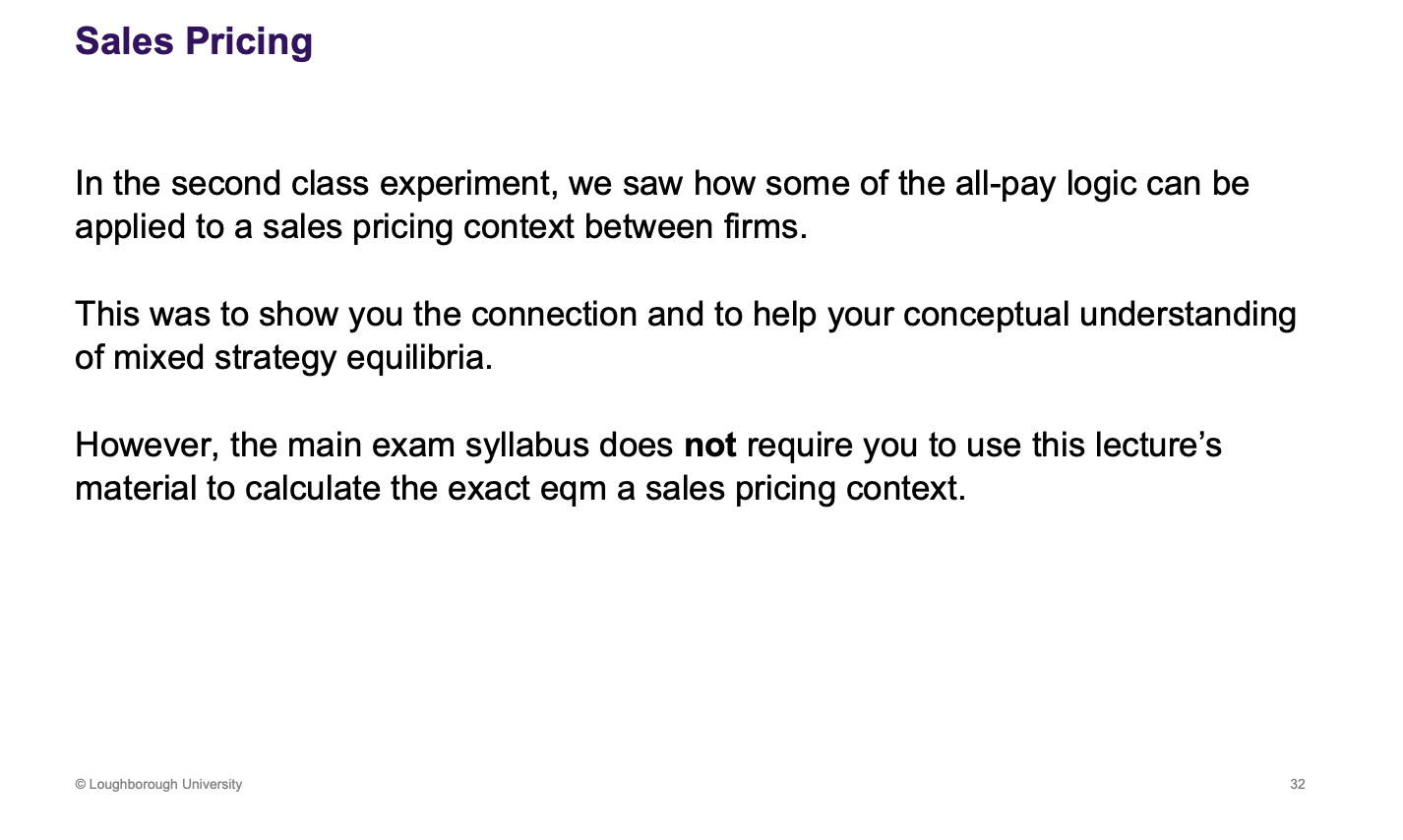Micro Economics L8 - L14
1/40
Earn XP
Description and Tags
Topics covered: Mix strategies 1 and 2, Not covered: Short and Long answers questions - look at the lecture slides
Name | Mastery | Learn | Test | Matching | Spaced |
|---|
No study sessions yet.
41 Terms
Look over the first Class experiment
Recap the following terms: Normal Form games, Strategy, Complete information, Full rationality and common knowledge
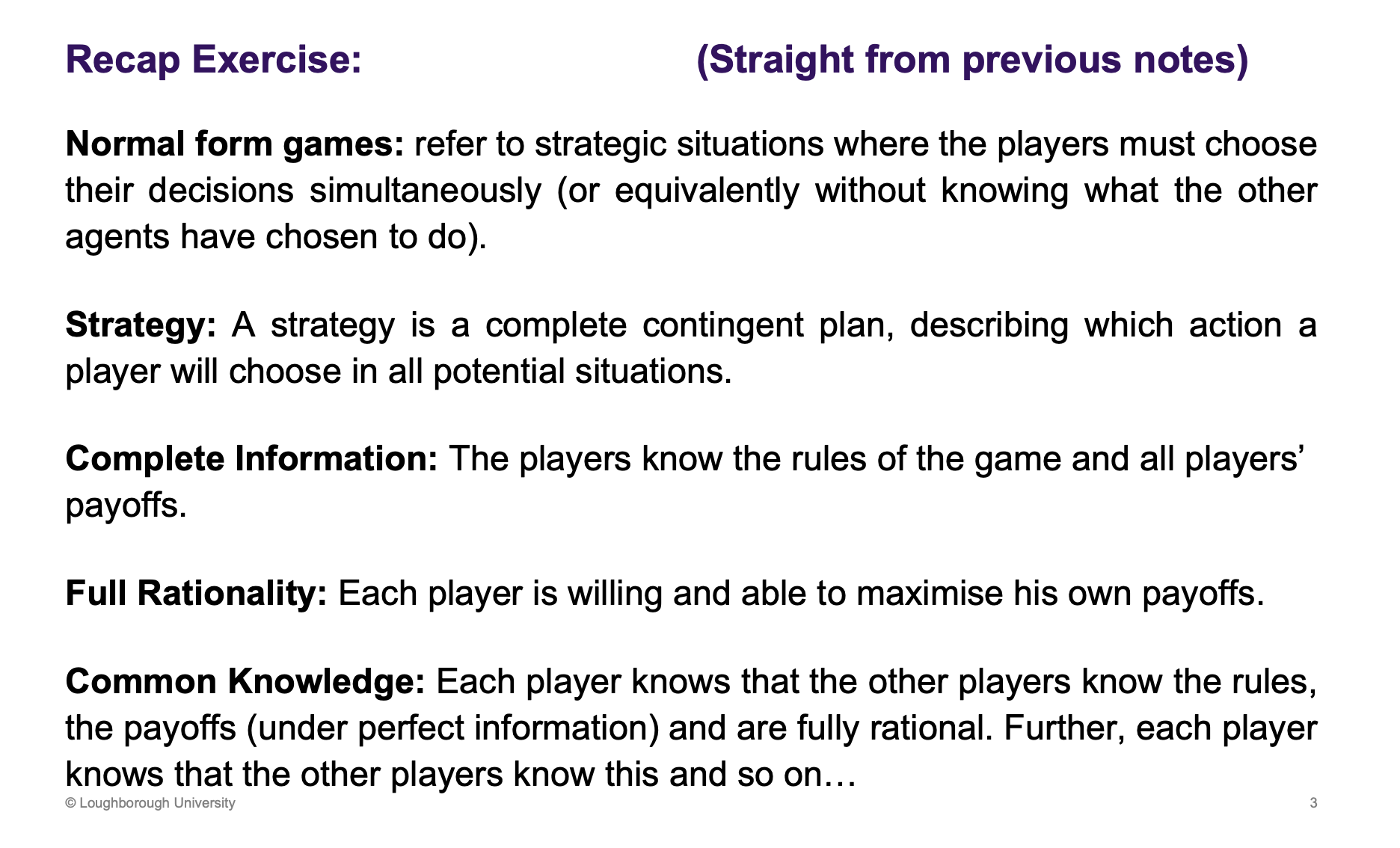
What does iterated deletion mean
Iterated deletion is a process used in game theory to simplify a strategic game by repeatedly removing dominated strategies. A strategy is considered "dominated" if another strategy is always better for a player, regardless of what other players do. The process continues by eliminating strategies that are dominated in the new, smaller game, until no more strategies can be removed.
Examples of nash equilibria in real life
Inspecting + Auditing
Military
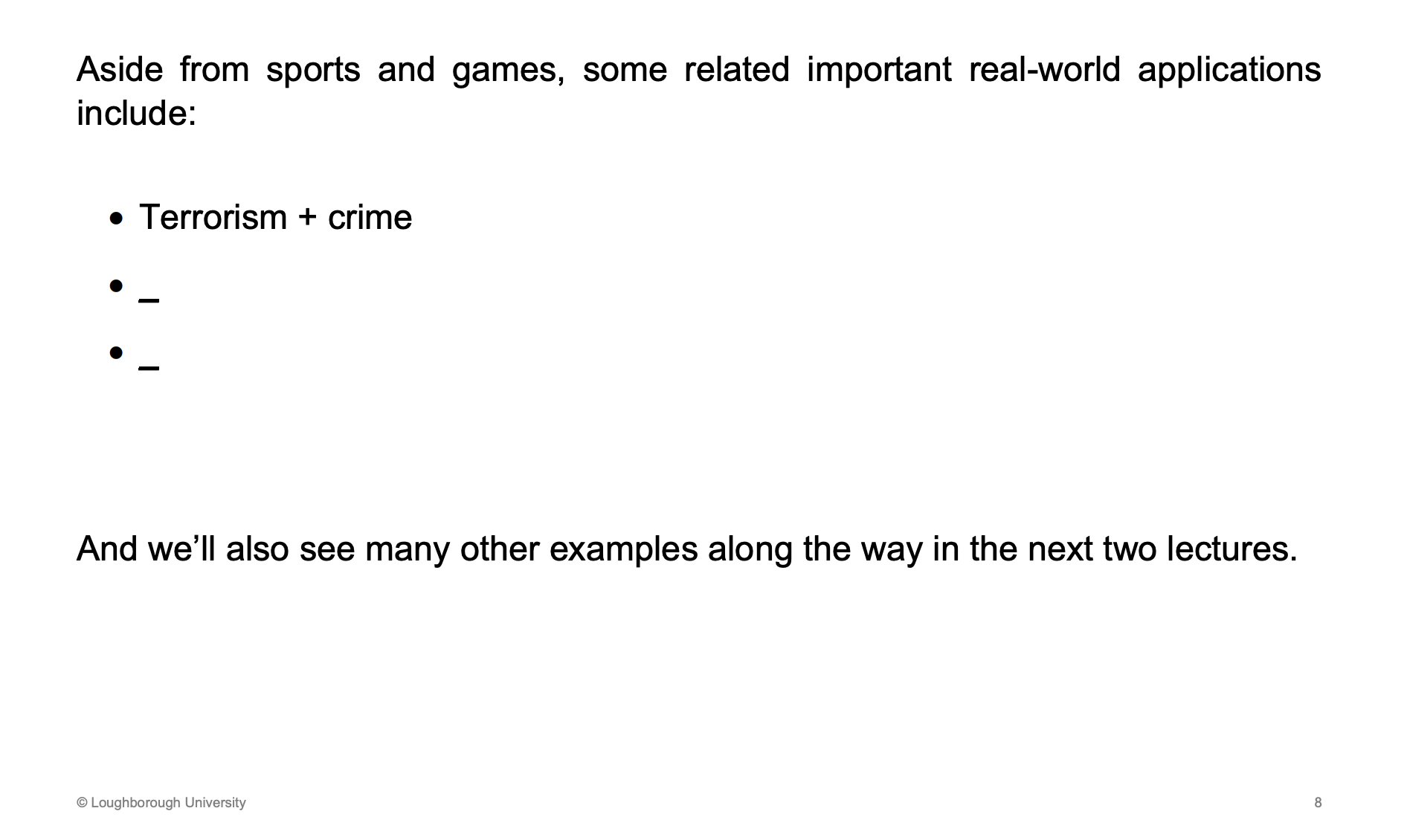
What is a mixed strategy Nash Equilibrium in a Penalty situation
No Nash equilibrium as presented previously.
Should involve some randomness
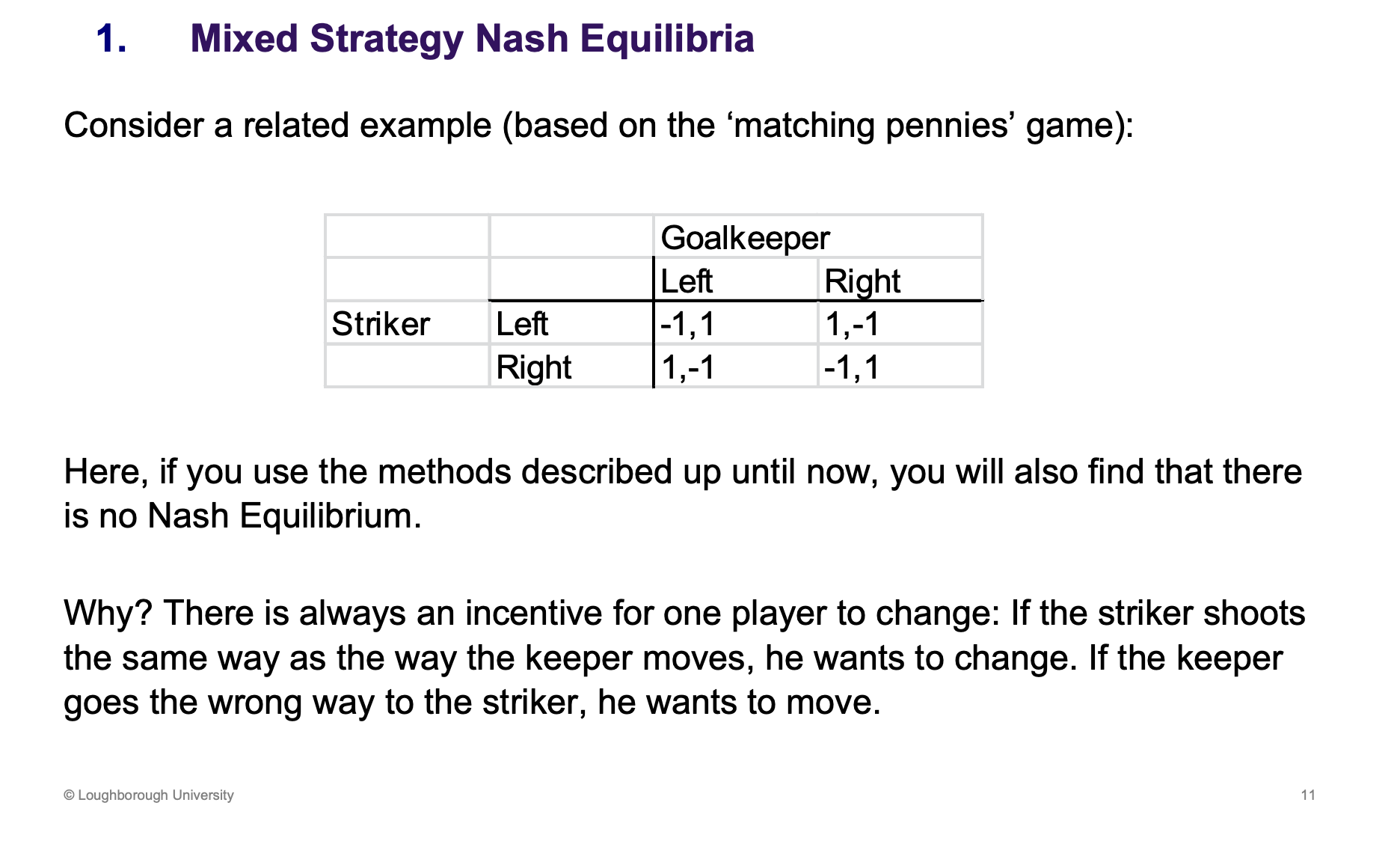
What is the difference between a pure strategy and Mixed strategy
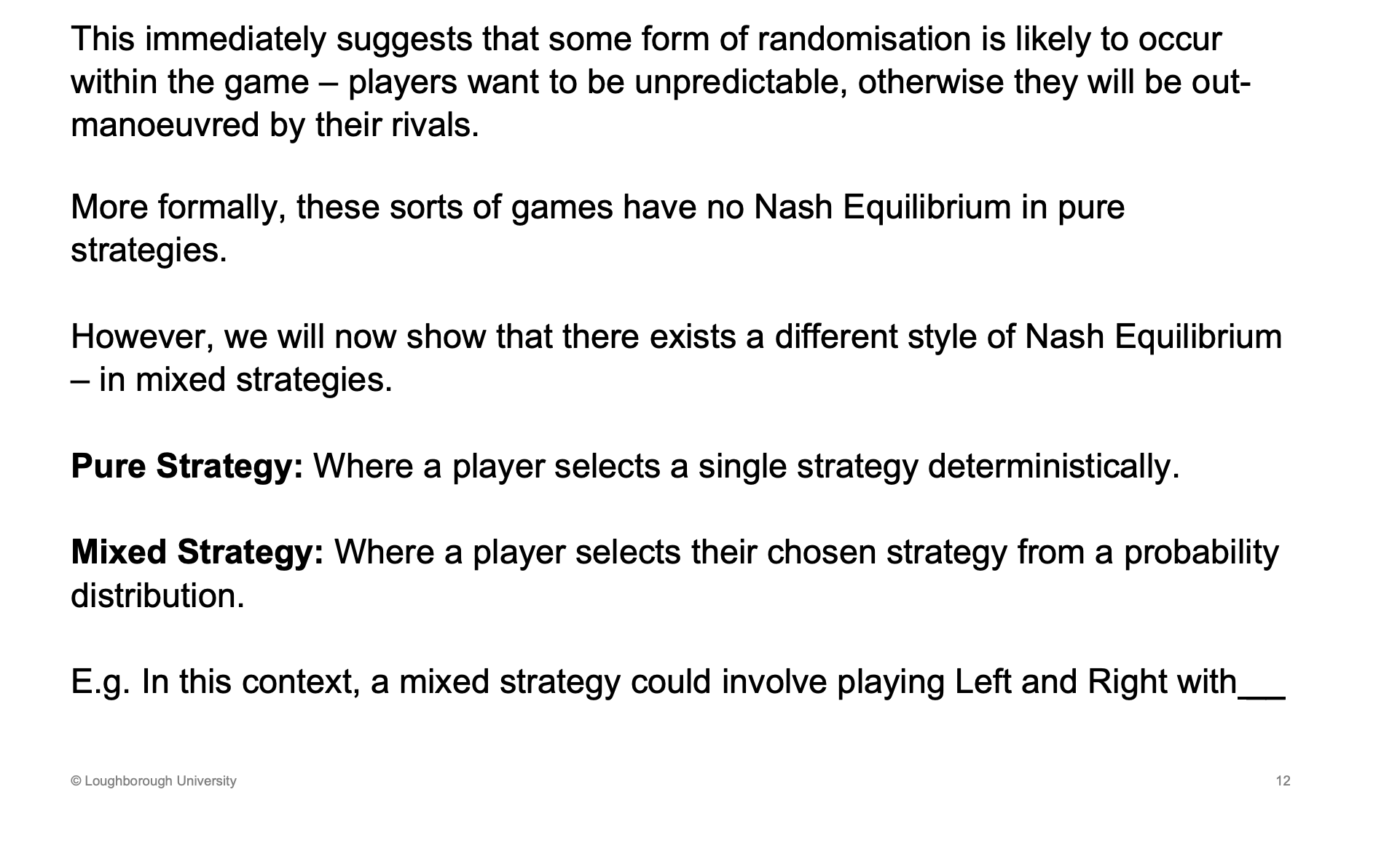
What principle from Nash equilibria broadly still applies here
Eqm = Equilibrium
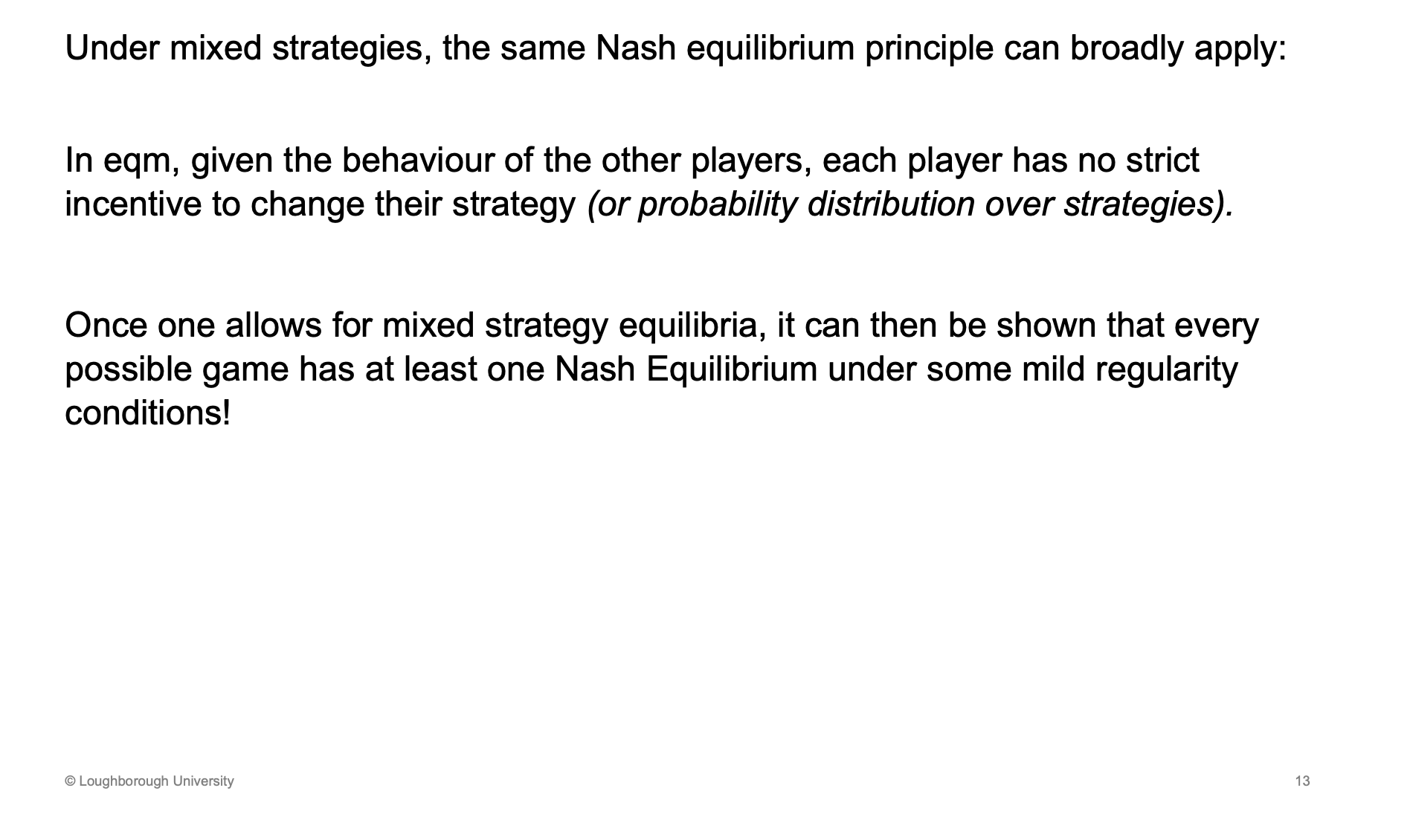
descibe the goalkepper and striker mixed strategy equilibria and how are the outcomes random
Add probabilities in.
Randomise an equilibrium, have to be indifference in strategies. One cannot be dominate compared to the other.
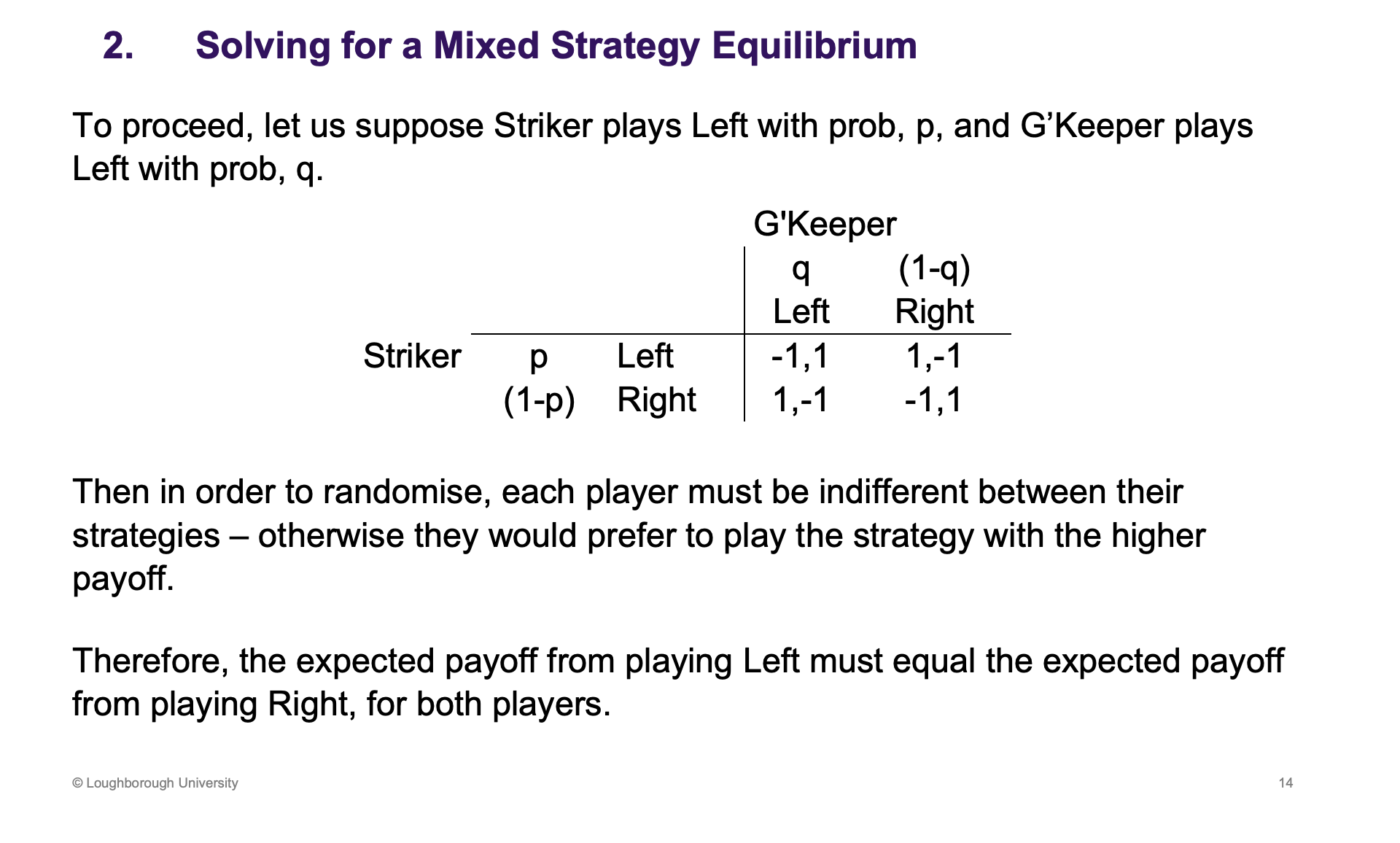
Based on the example above what is the outcome of q (Probability)
The expected payoff of going right has to be equal to going left, therefore we make it equal to each other
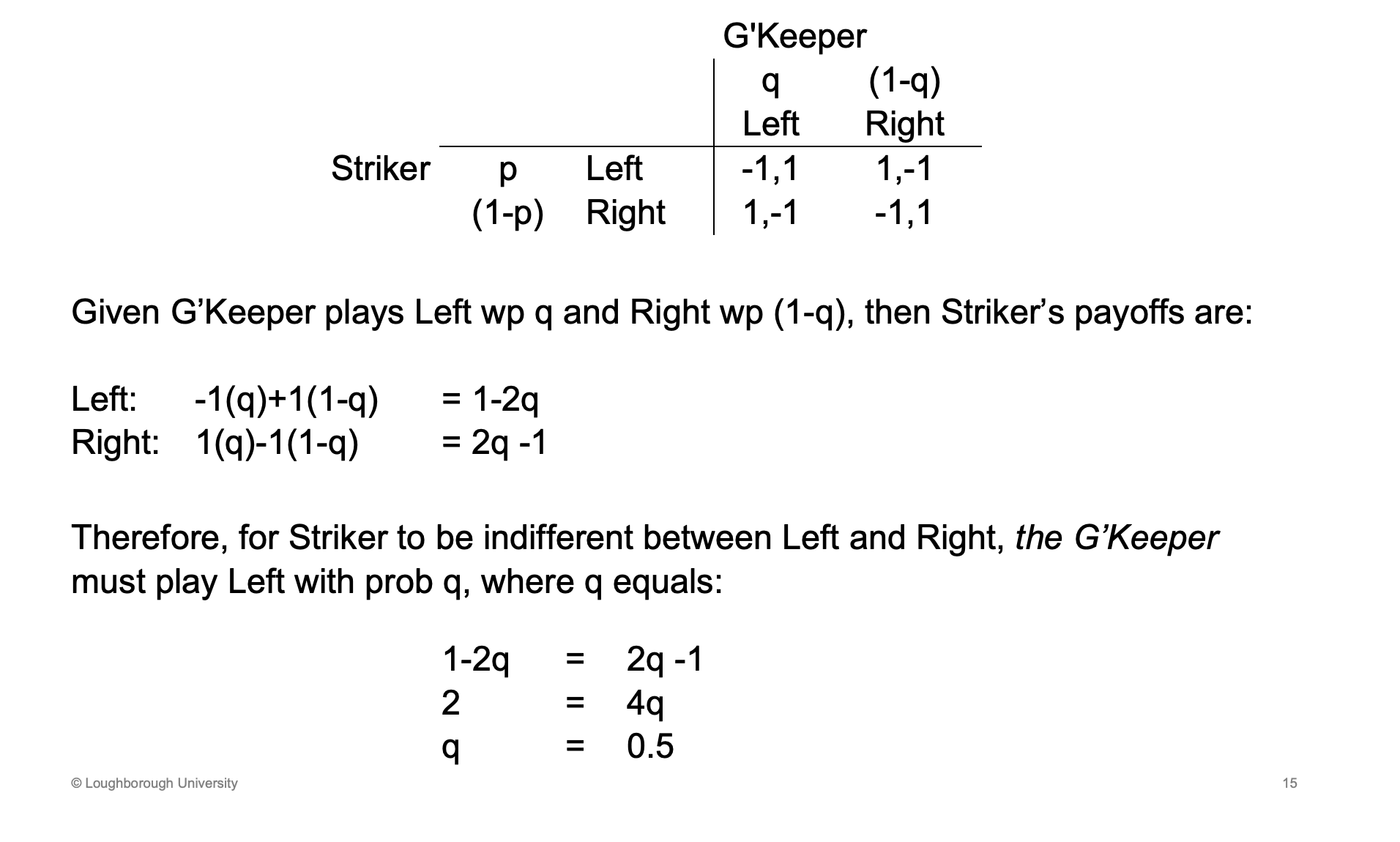
What about probability P from the example above
The expected payoff of going right has to be equal to going left
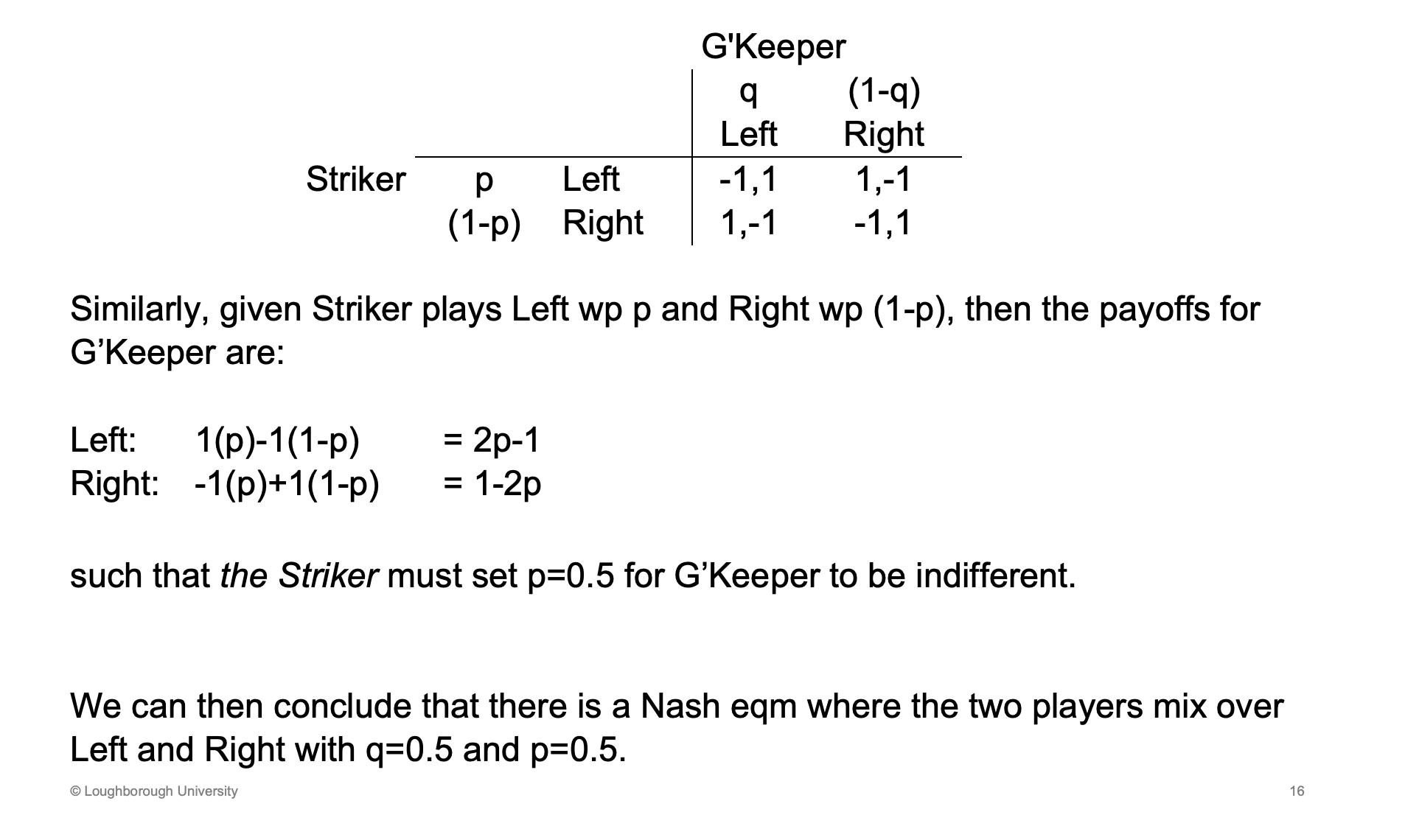
What does the equilibrium mean in the example, what does it tell us about the strategies
With the probability (1/3)
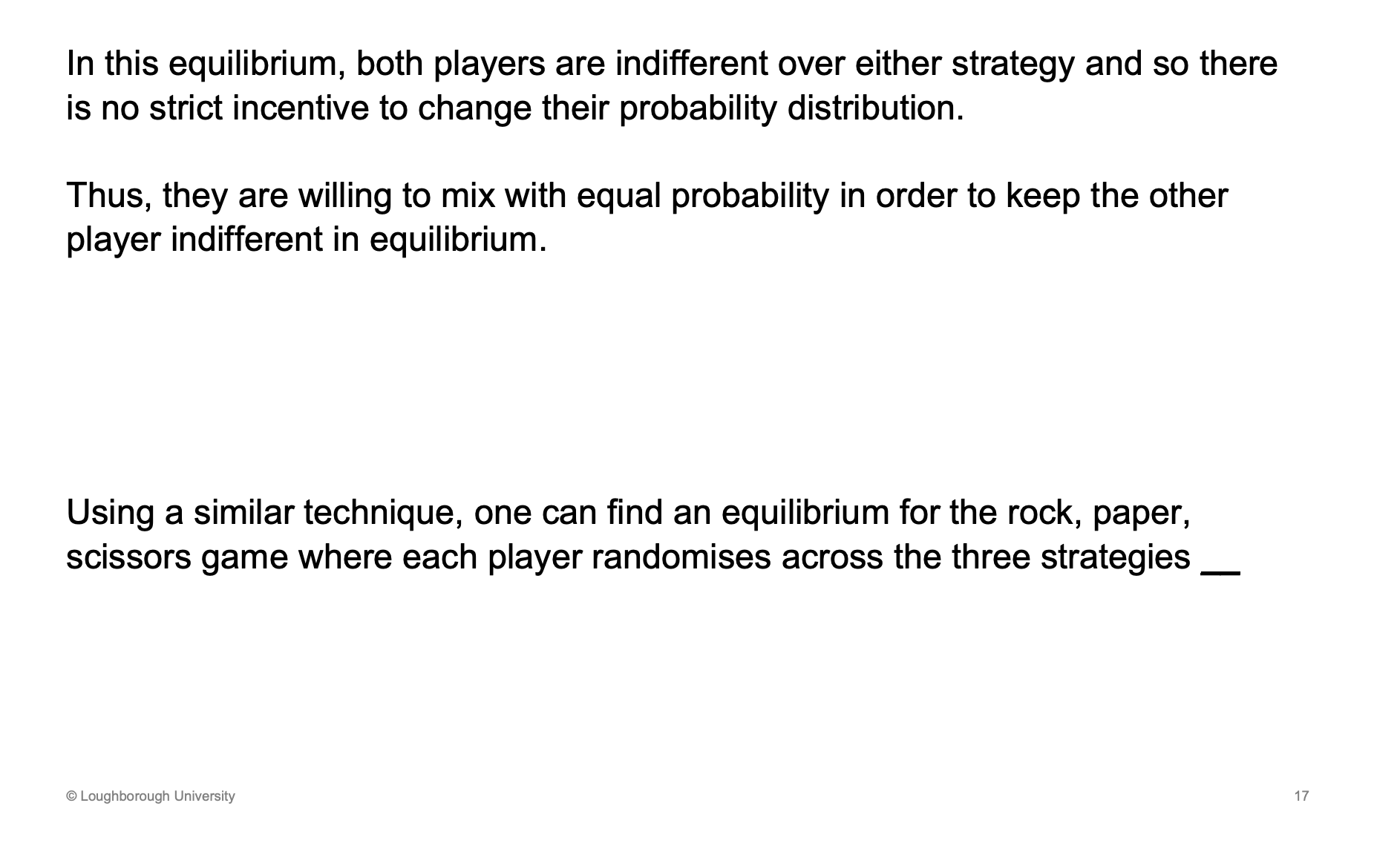
What does willingness to mix with equal probability mean in order to keep the other player indifferent in equilibrium
Explaination to willing to mix with equal probability:
Simplified Explanation of the Randomization Principle
In a mixed strategy equilibrium, the logic is:
Your Goal: Keep the Opponent Guessing. As a rational player, you don't want your opponent to know what you'll do next. If they could predict your move, they would always choose the action that maximizes their own payoff against yours, leaving you worse off.
The Method: Make the Opponent Indifferent. To make your opponent completely unpredictable (i.e., force them to randomize), you must choose your probabilities (the "mix") in such a way that every single choice they could make gives them the exact same average result.
The Result: Stability. Since the opponent gets the same payoff no matter which action they choose, they have no strict reason to favor one over the other. They are then willing to randomize their own moves, which is the only way for the equilibrium to be stable.
In short: You randomize your actions to keep the opponent indifferent, which in turn forces the opponent to randomize their actions, making the equilibrium stick.
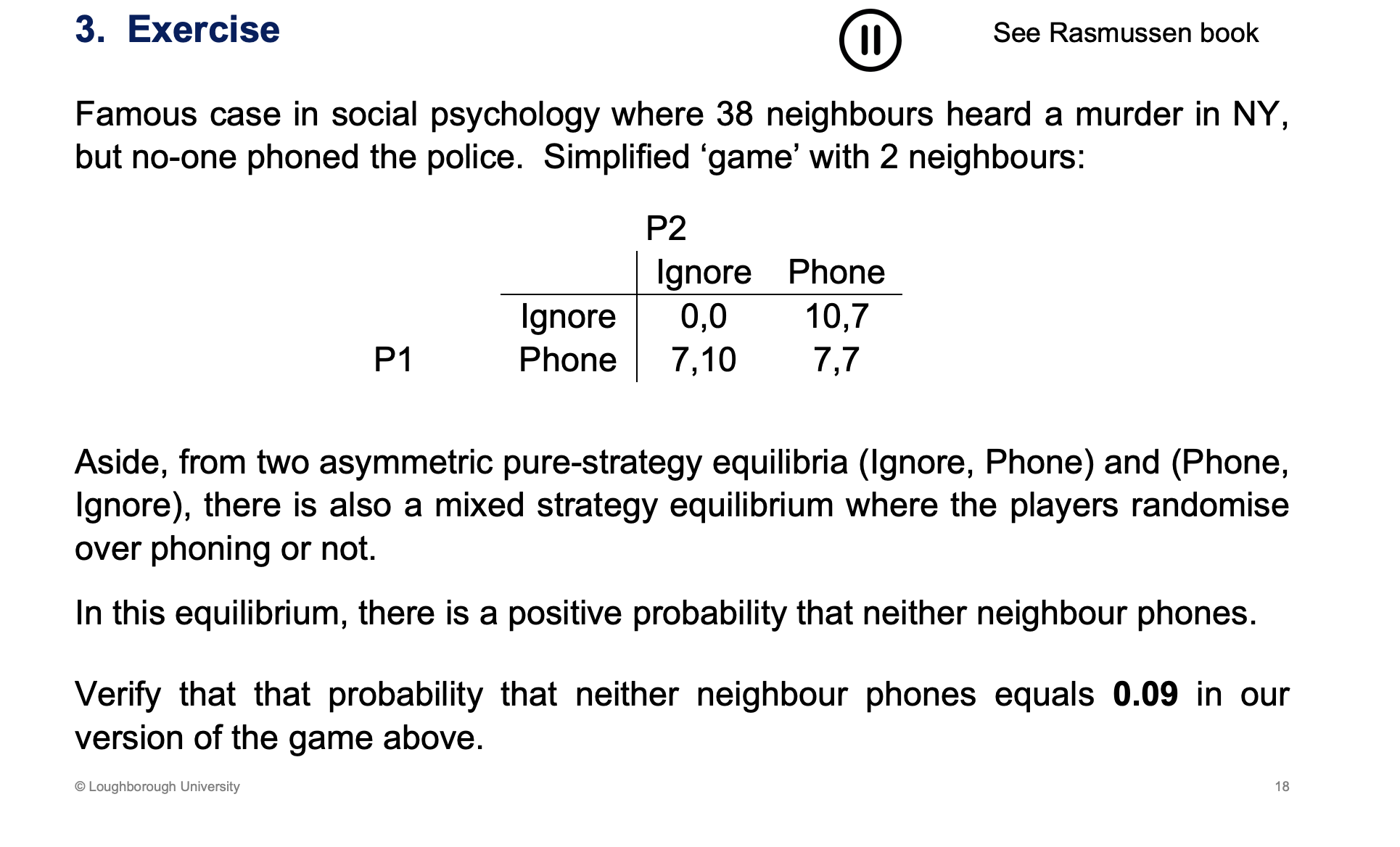
Complete this example
0.3 × 0.3 = 0.09
Explanation: Player one is indifferent to whatever player 2 chooses, so we are looking at the probabilities on the first line. I will get 0, given the probability that player two selects ignore as well, and then I will get 10, given that player 2 phones the police
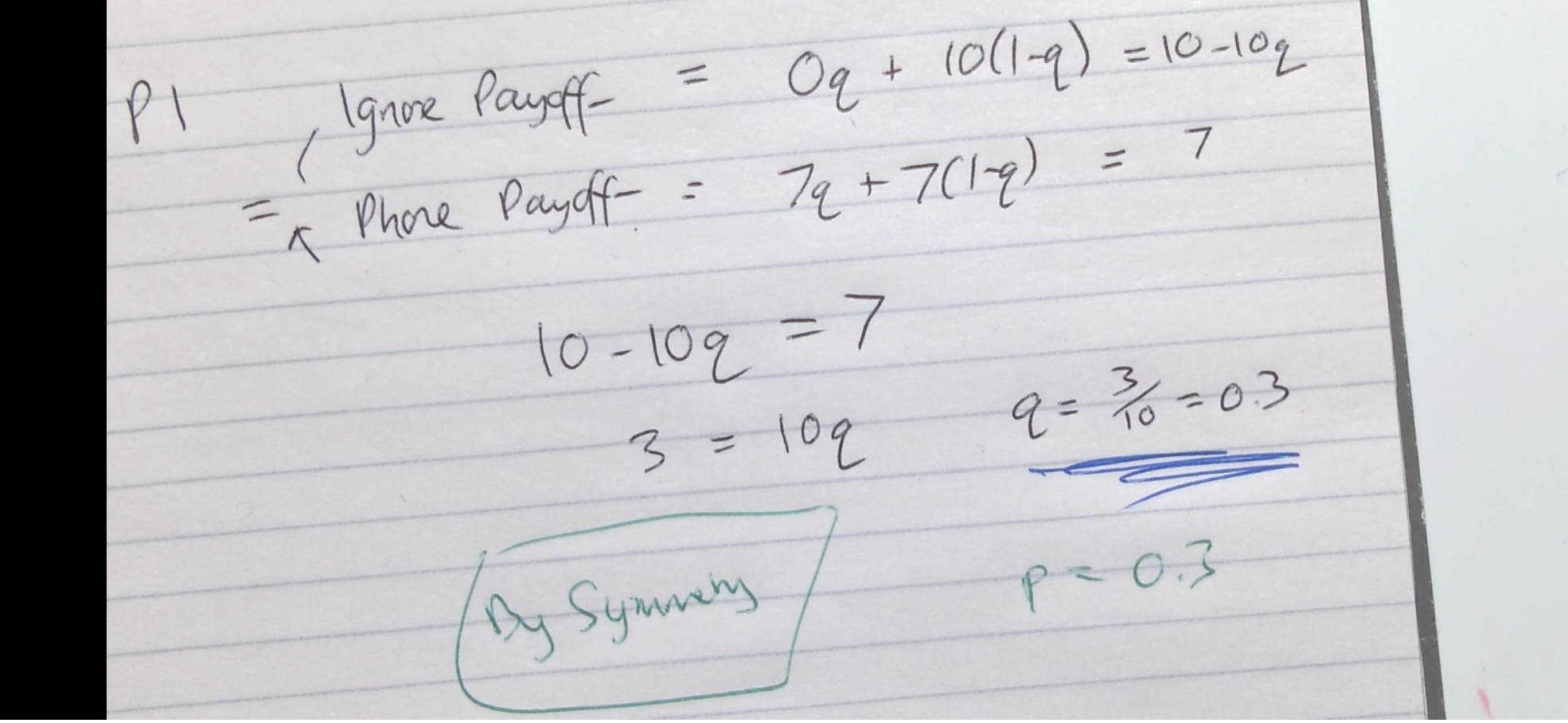
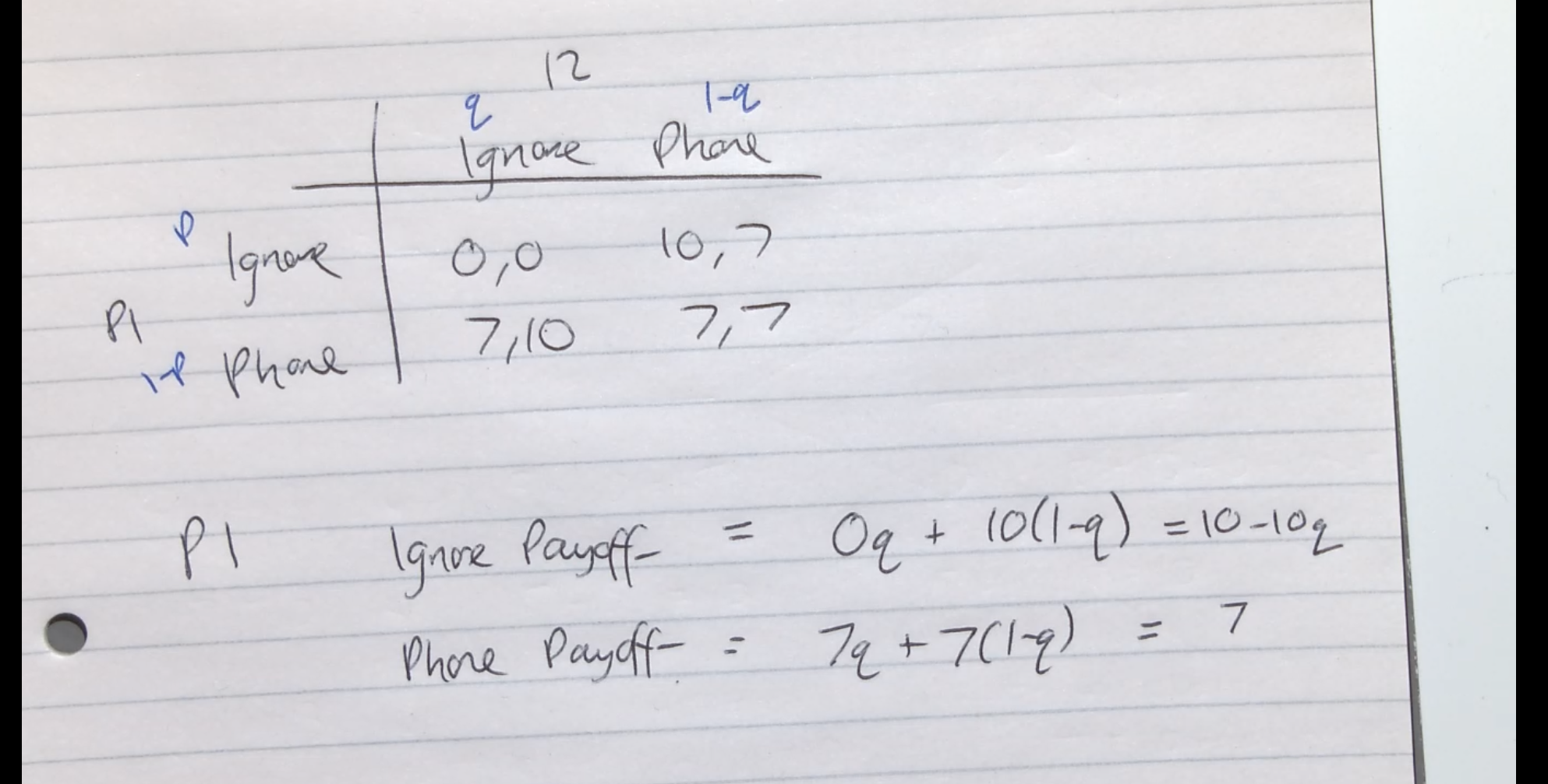
When do Mixed strategy equilibrium arise
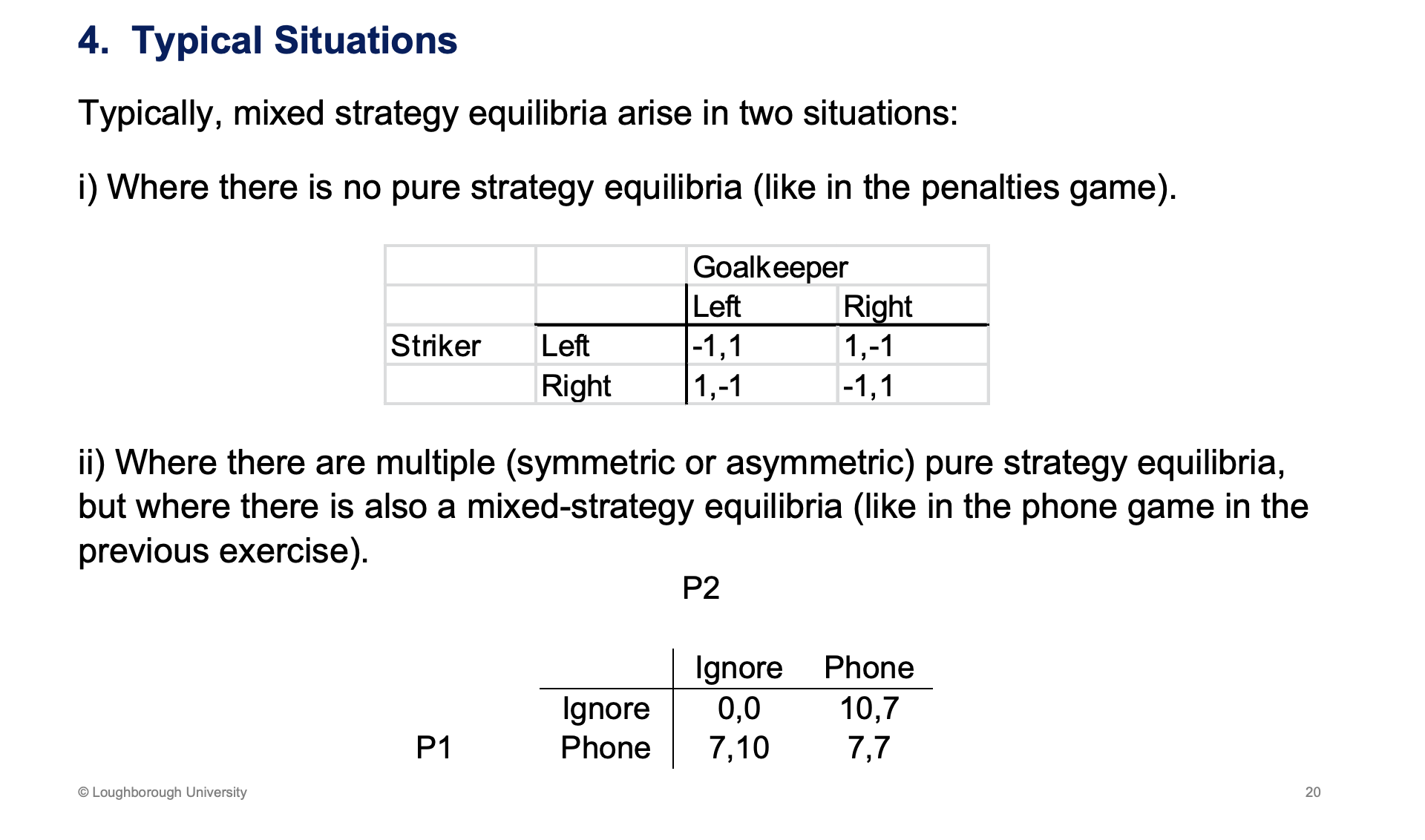
Some cons of mixed strategy equilibrium
Some situations where people are unpredictable, but are they random??
Situations which are indifference are very uncommon
Regret, makes it sense like it shouldn't be an equilibrium. Penalty shoot out example
Not good at randomising, rock paper scissors video example. If you aren't random we can take advantage of this and win, not captured in the equilibria.
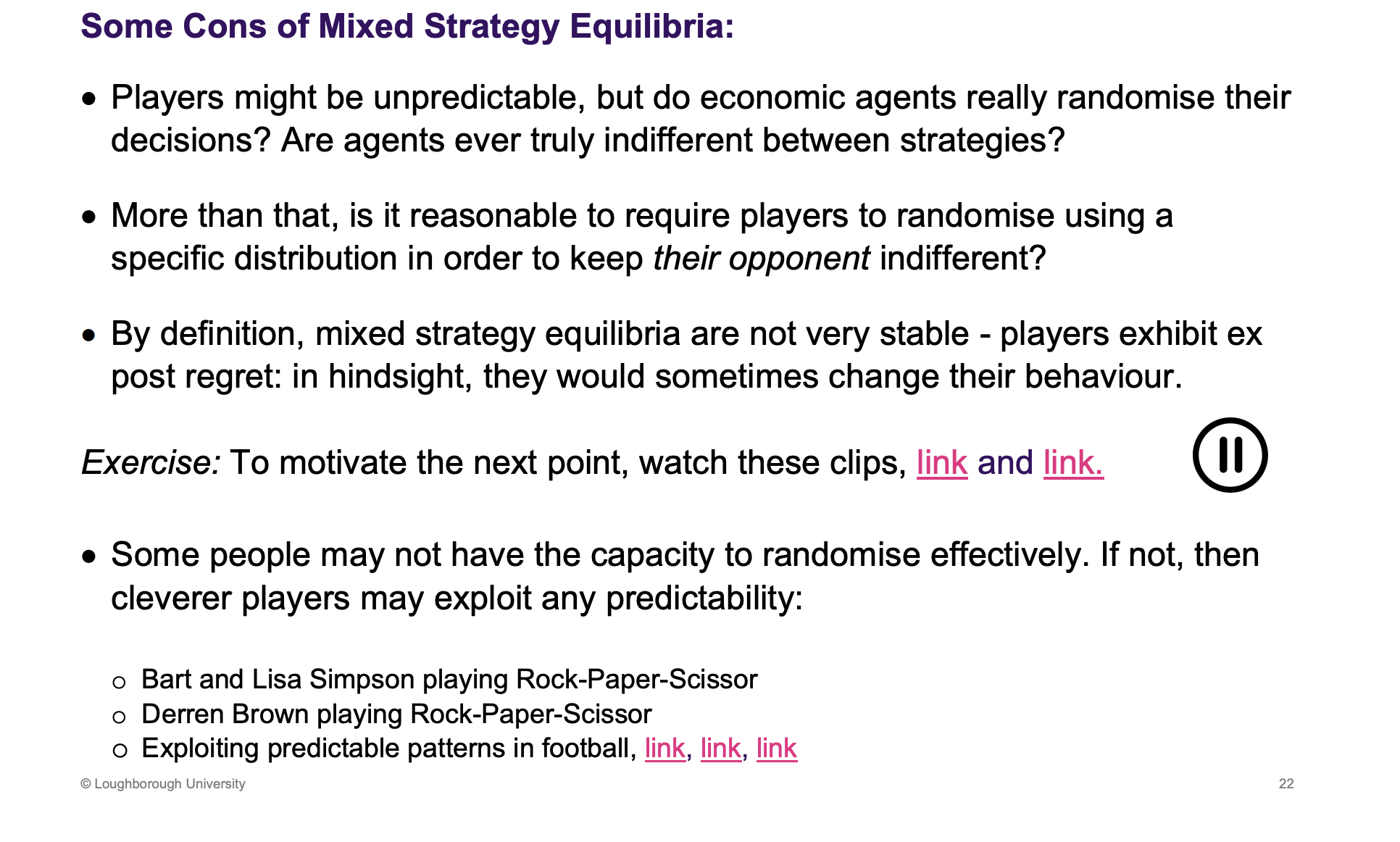
Some pros of mixed strategy equilibria
Unpredictability
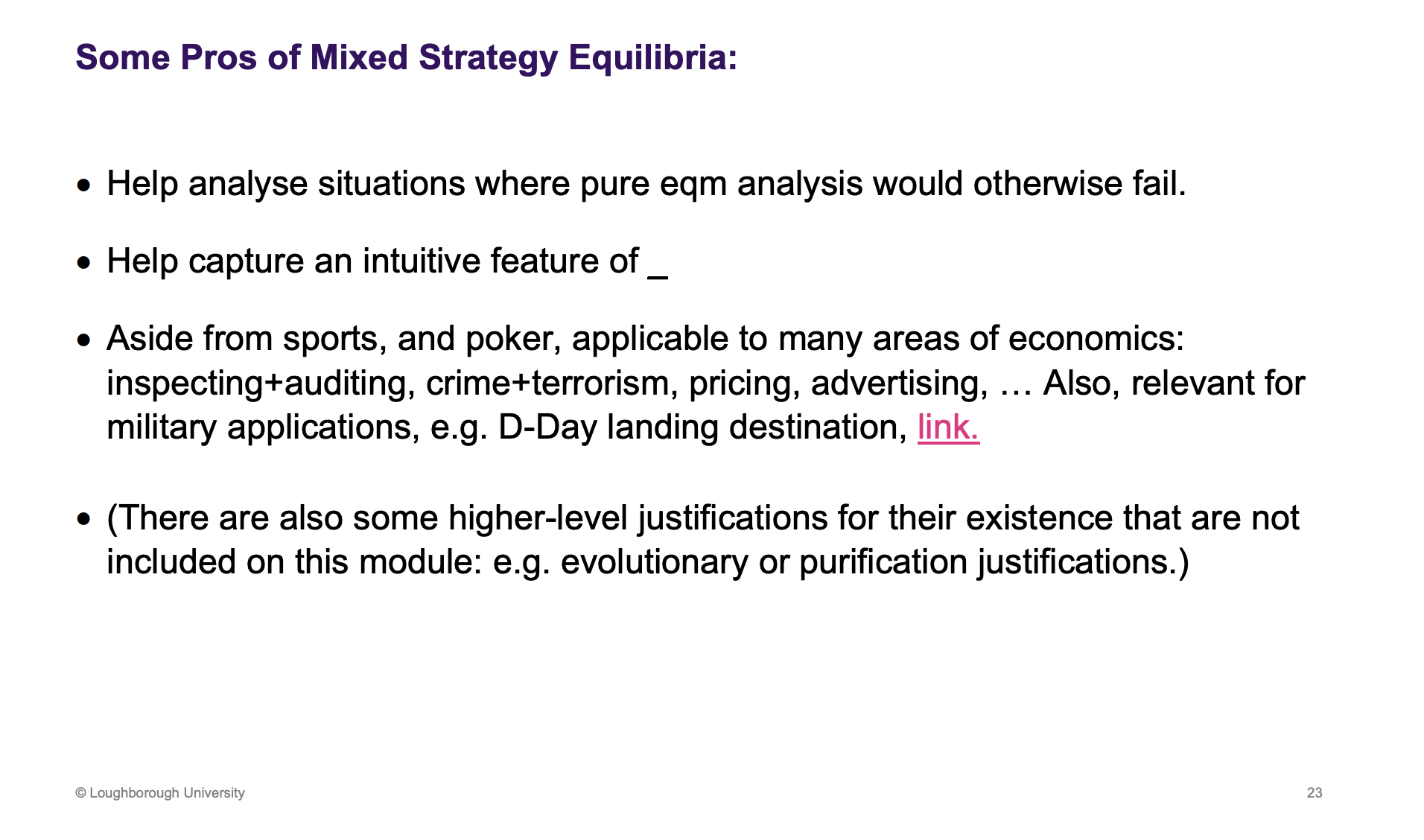
What are some pieces of evidence for mixed strategy equilibria
Frequently relative to that predicted
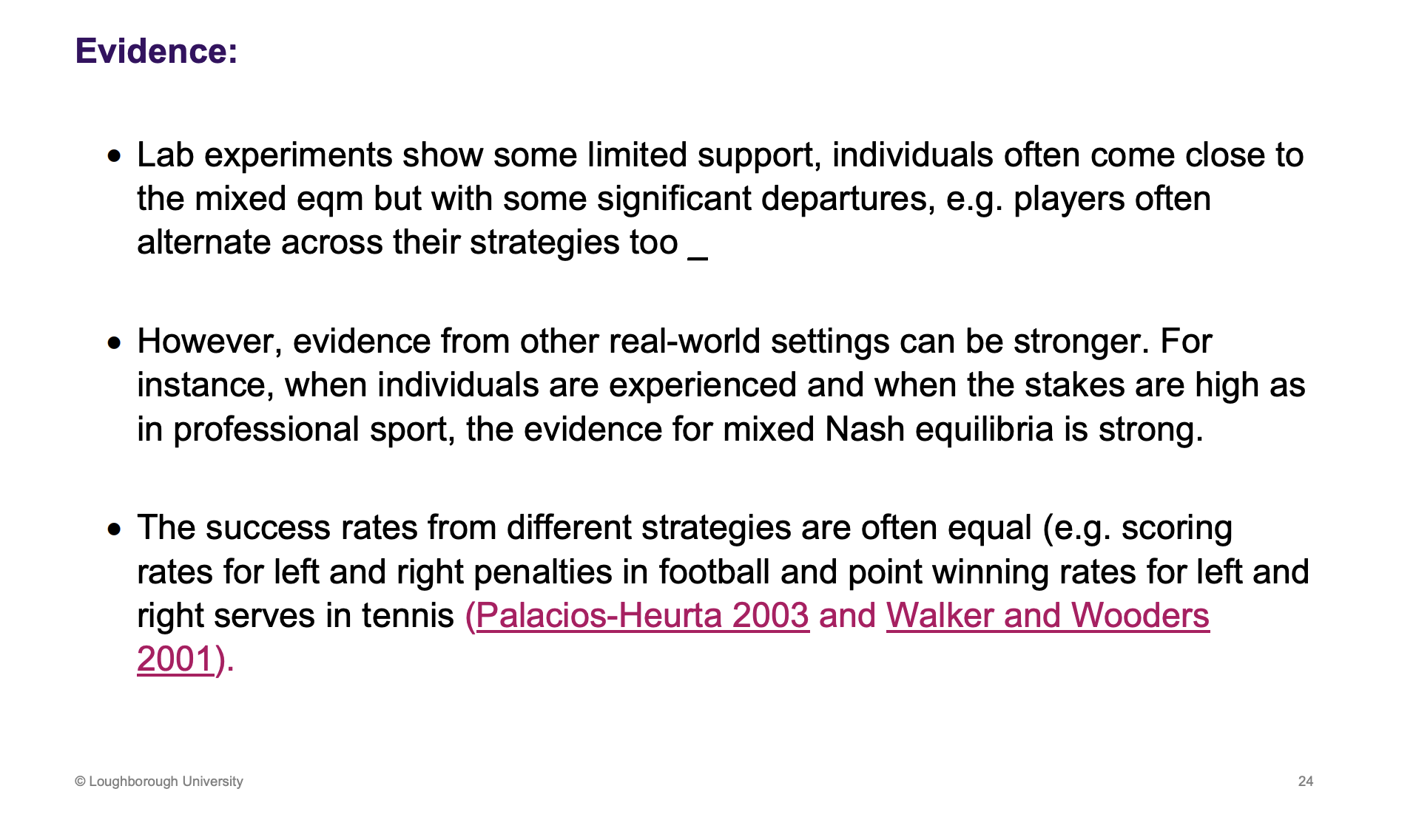
Do iteration deletion on this example
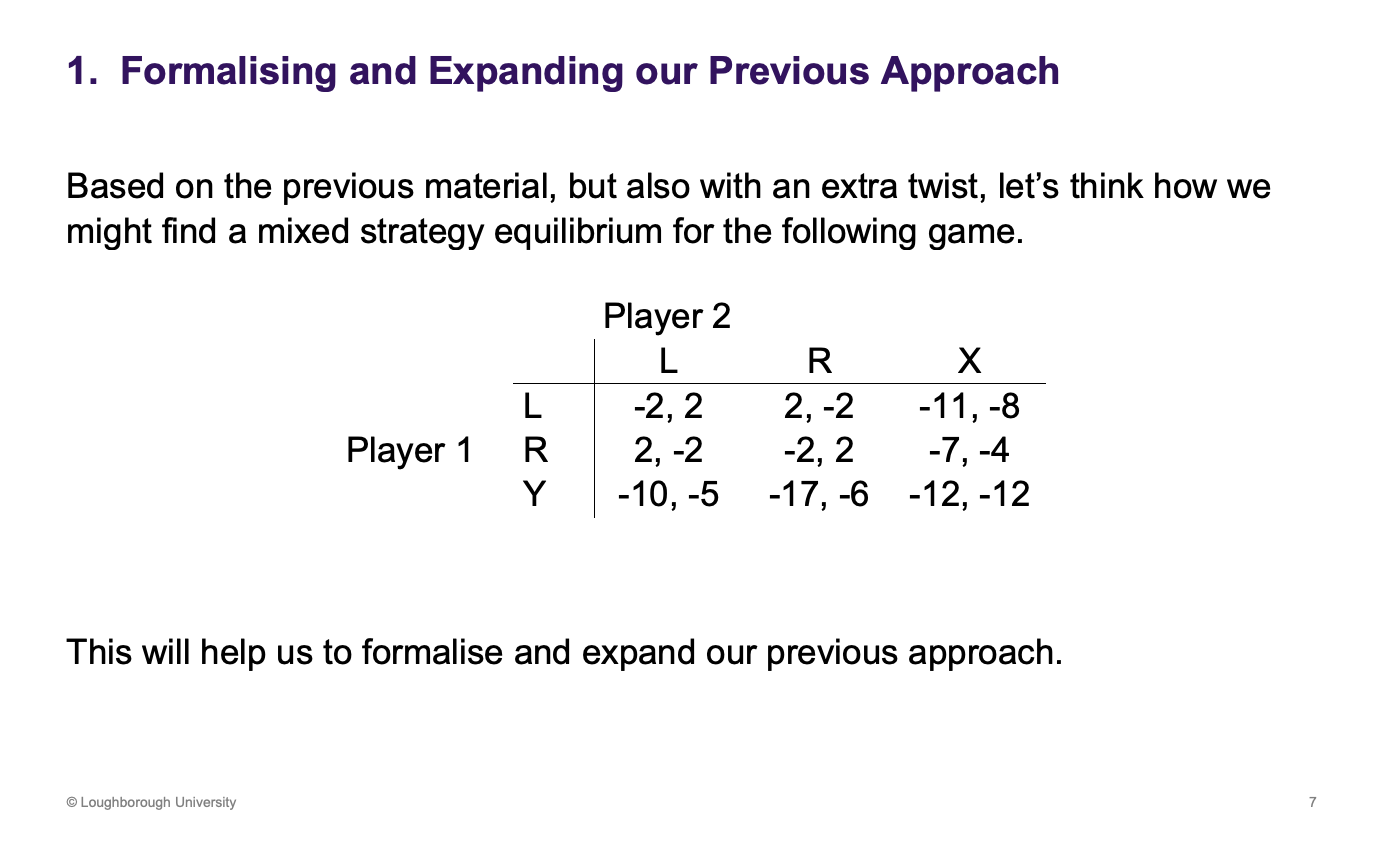
What does iteration deletion mean
Rationalizable - can be rational depending on what the other player chooses
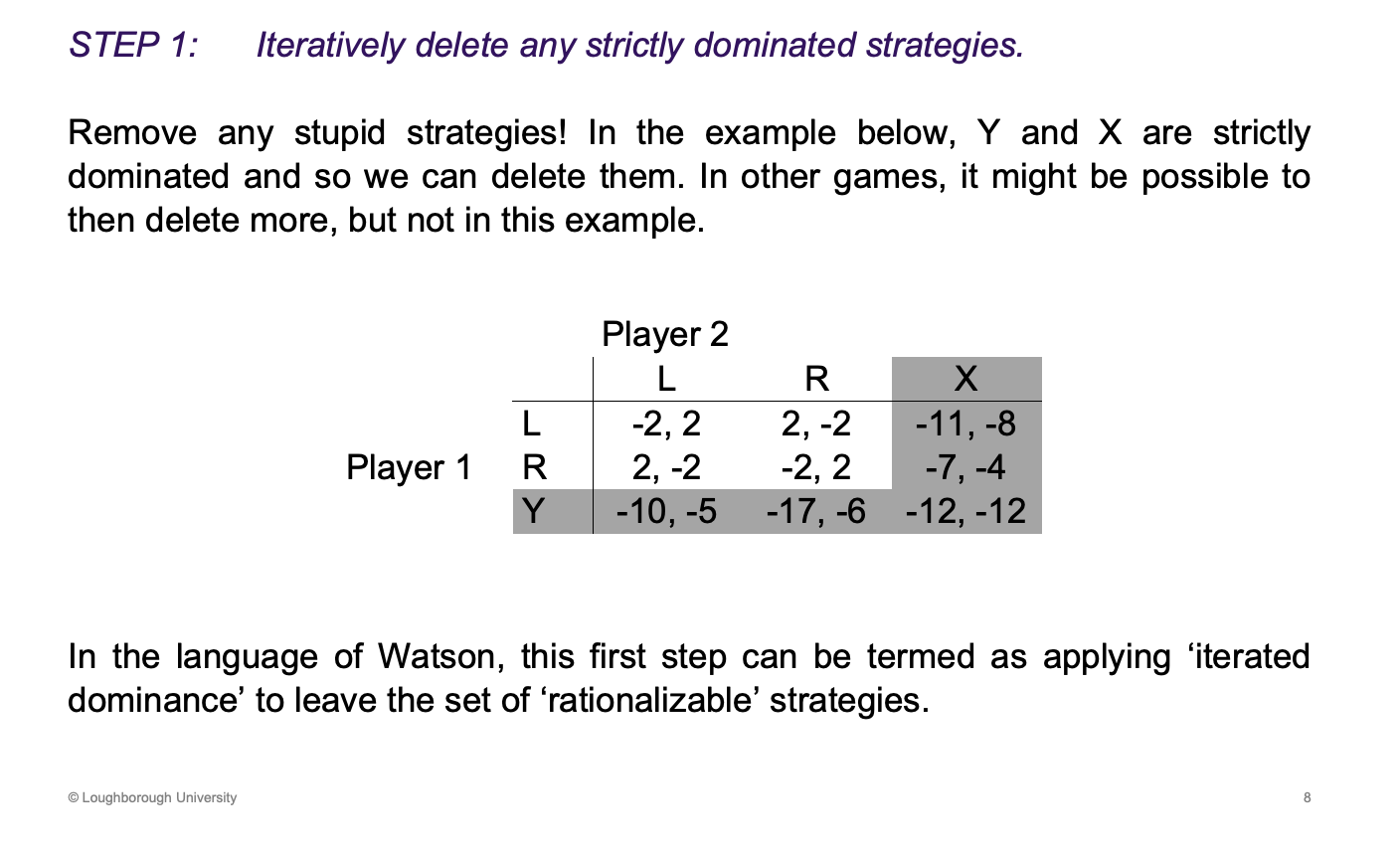
Assess whether this example is mixed strategy
Will arise, when no pure strategy equilibrium and/or more than one pure strategy equilibrium.
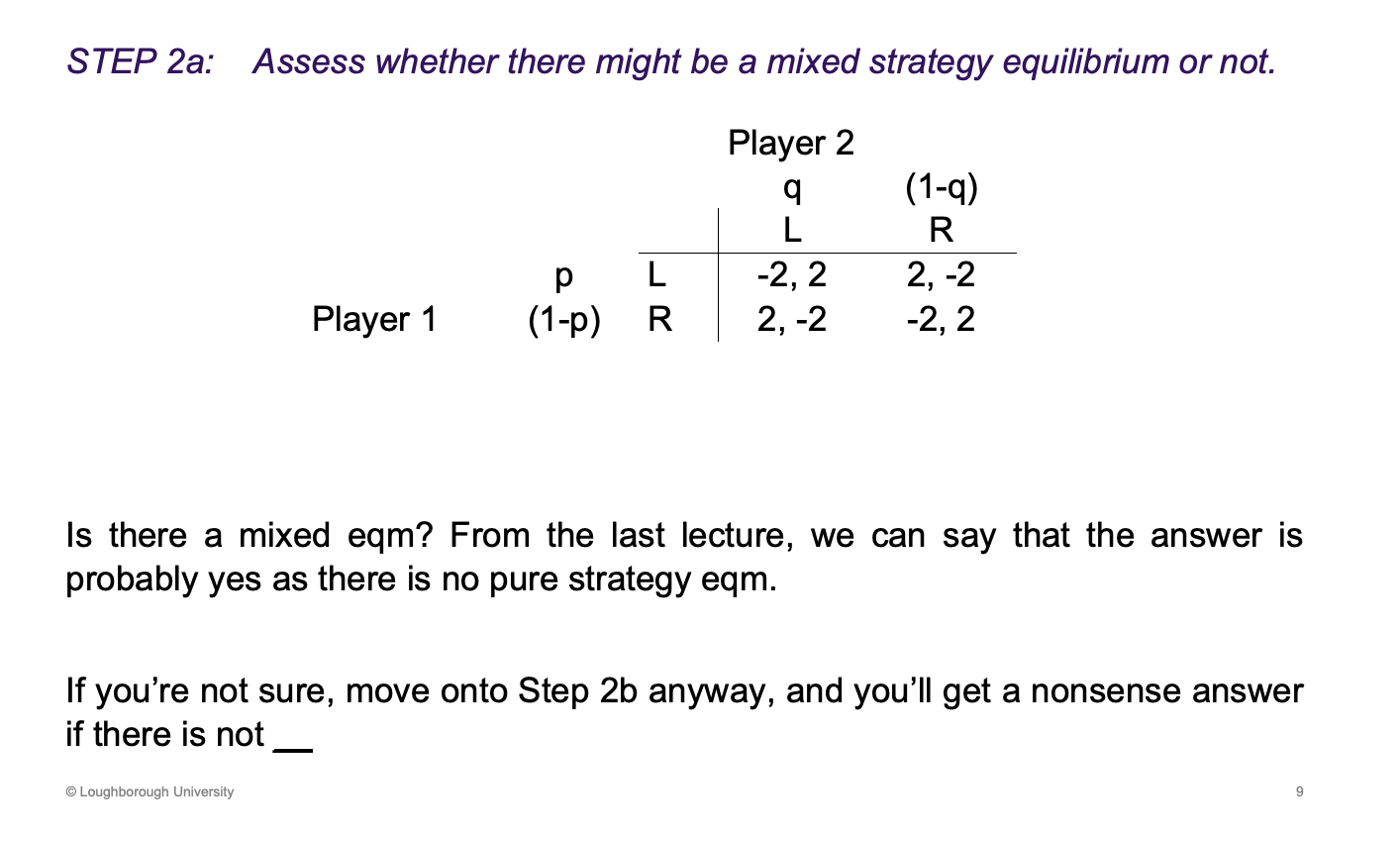
Find the probability distributions of the example above
Has to be indifferent otherwise the wont be random, which is needed
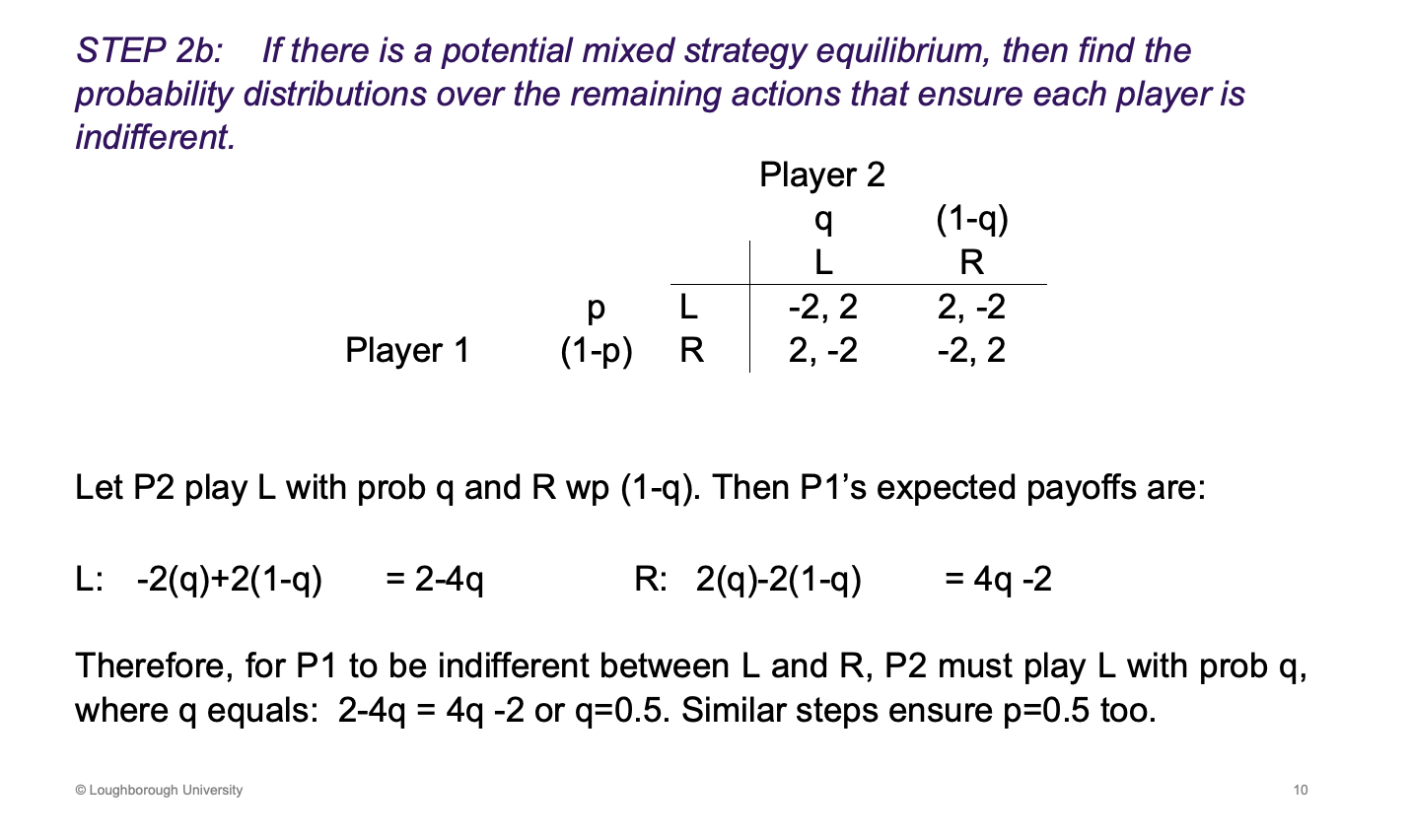
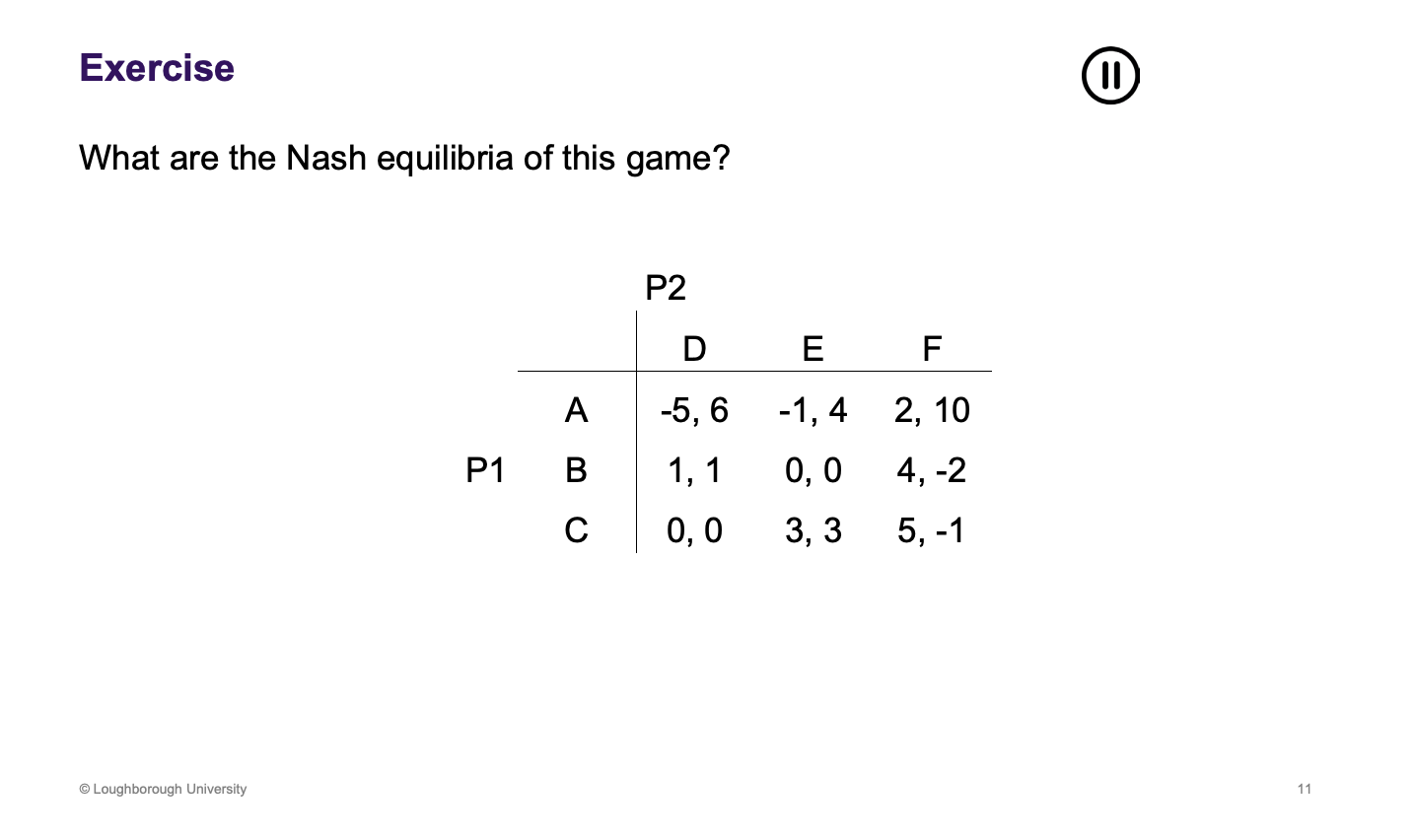
Work through this example
Answers written in the book
What are continuous strategy called and how will this be taught, through what example?
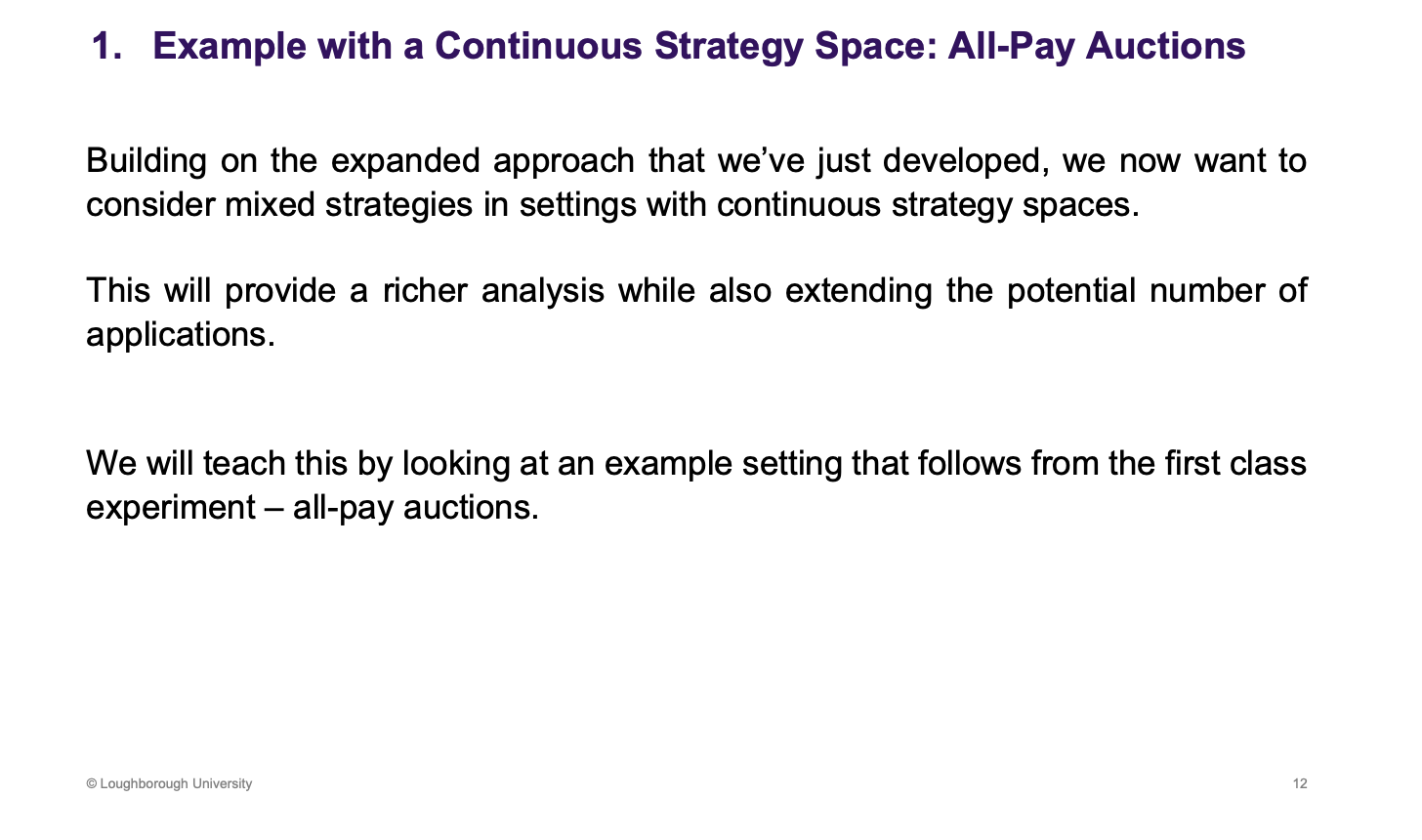
What is an all pay auction and what are some example of it
Bidding on contracts is an example
Examples. Marketing, Football clubs, War, job applications
Legal Battles or Lobbying
Rewards in organisations (e.g Promotions)
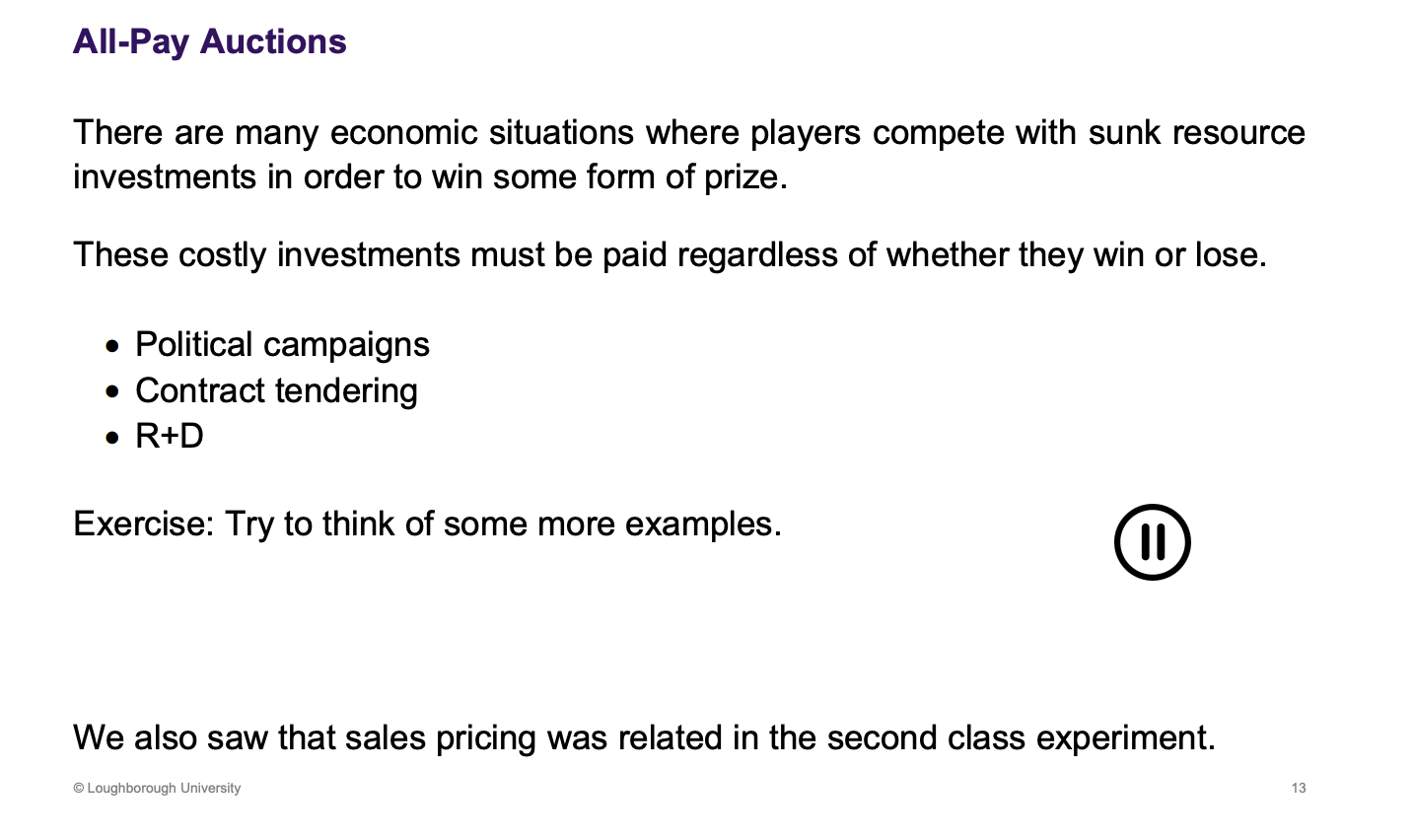
What is the set up of the model in a continuous space
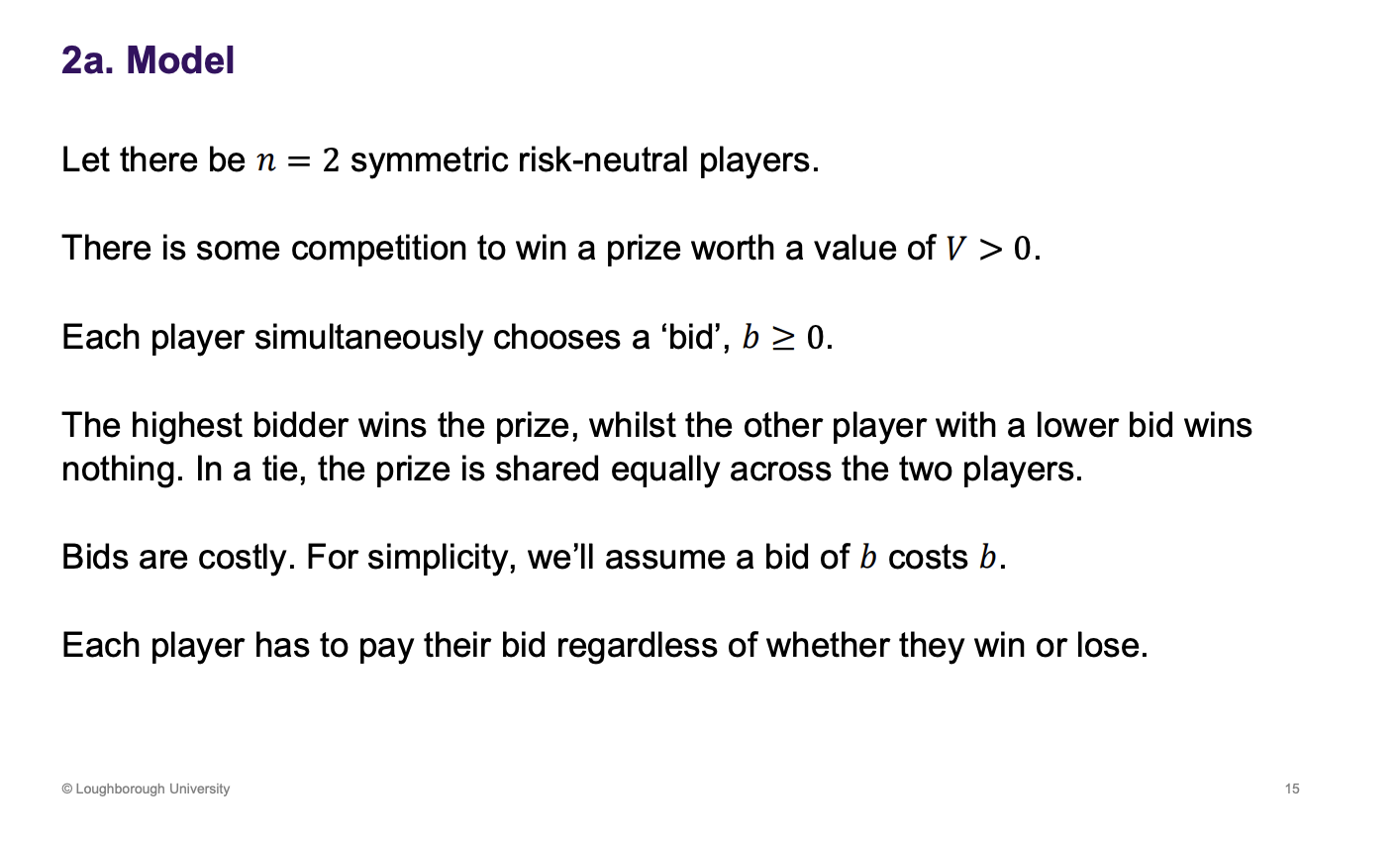
Describe the pay offs of the model
Prize is worth Z and b is the bid
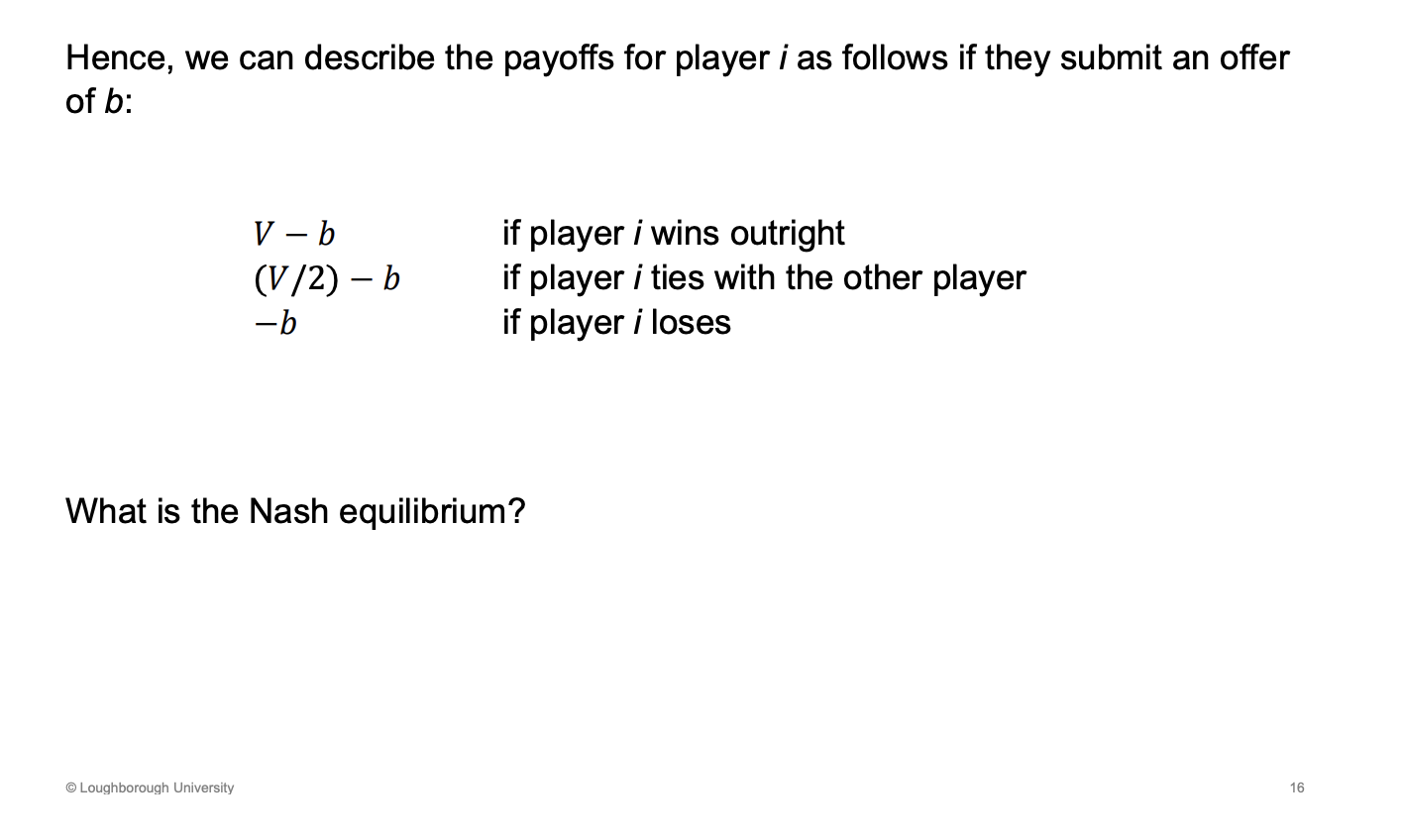
How do you get to the equilibrium Step 1
Paying more than what the prize is worth - irrational
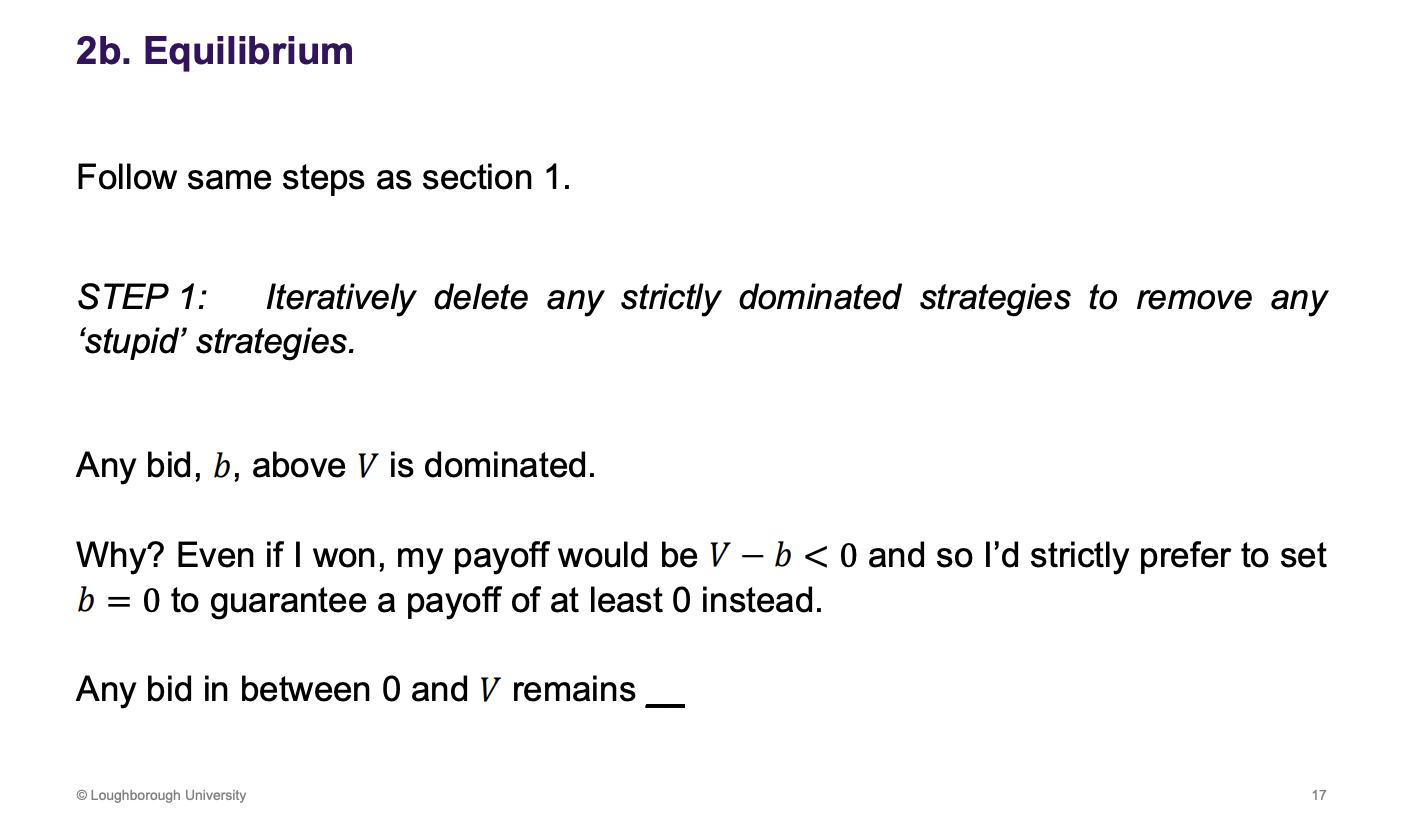
How do you get to the equilibrium Step 2a
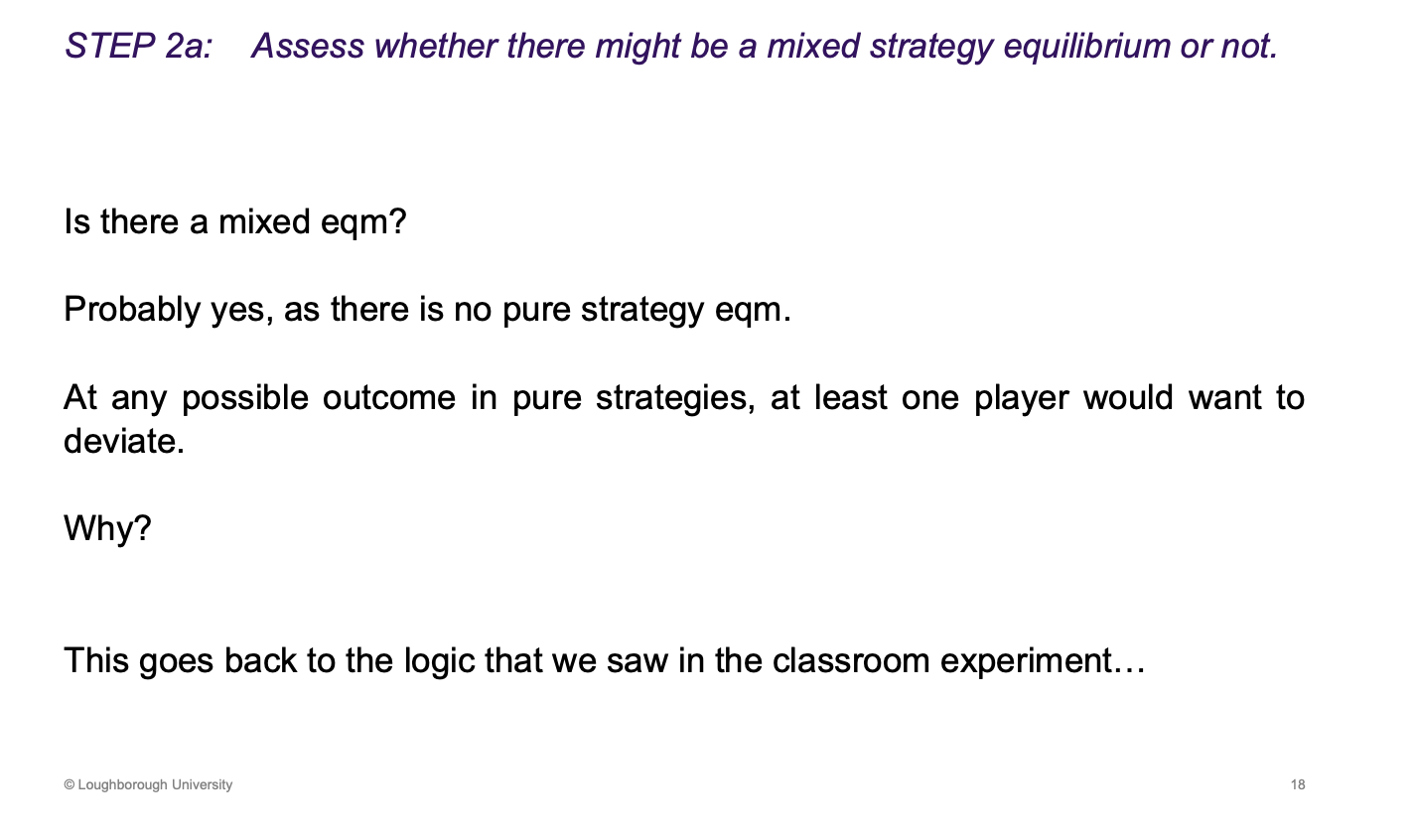
How does the logic in step 2a apply to the class experiement
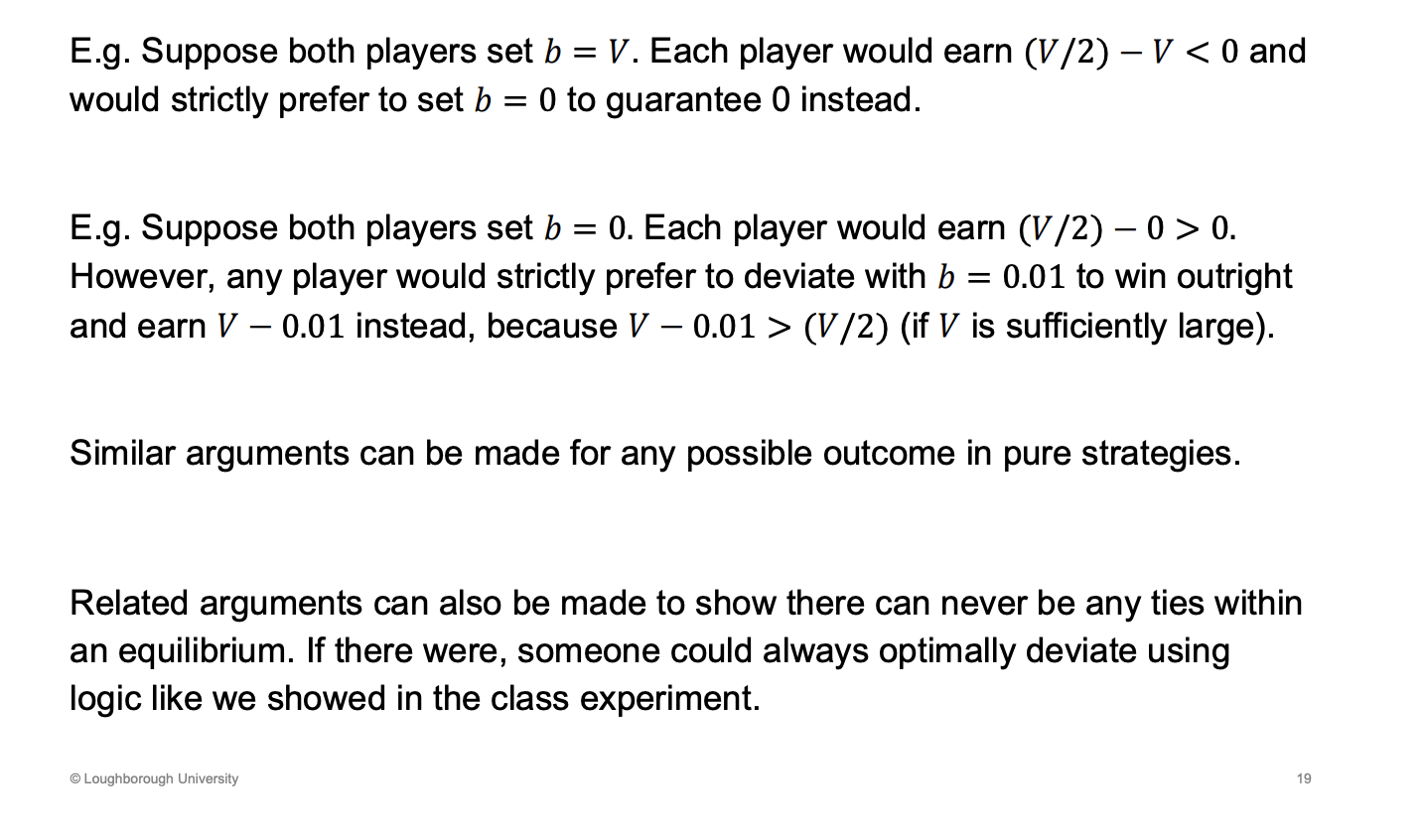
How do you get to the equilibrium Step 2b (how do you get the probability distributions)
Infinite values between 0 and V, this is why we need probability distributions rather than p and q
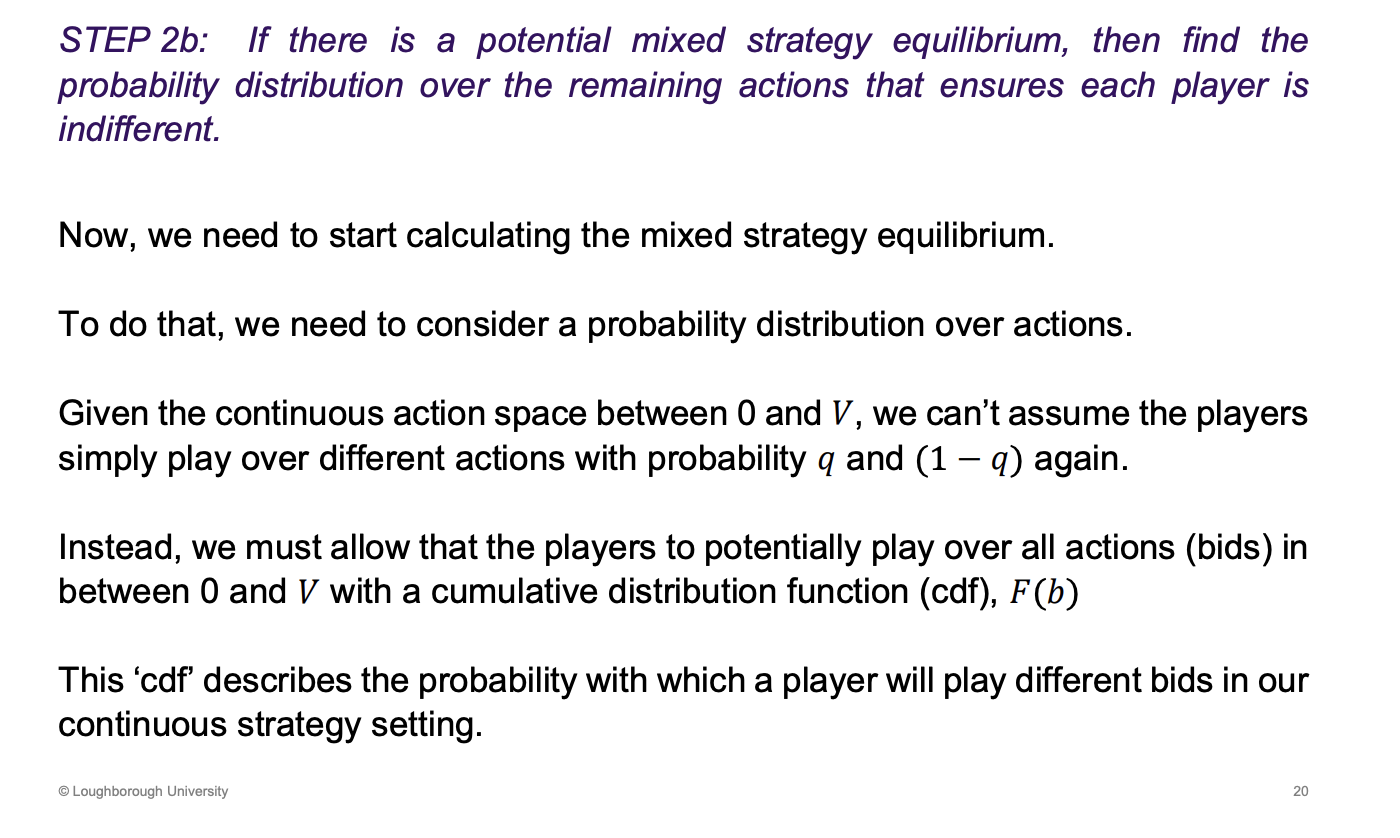
What is a cumulative distribution function
At 3, half the probability is less than 3 and half is above 3.
F(b) is never decreasing
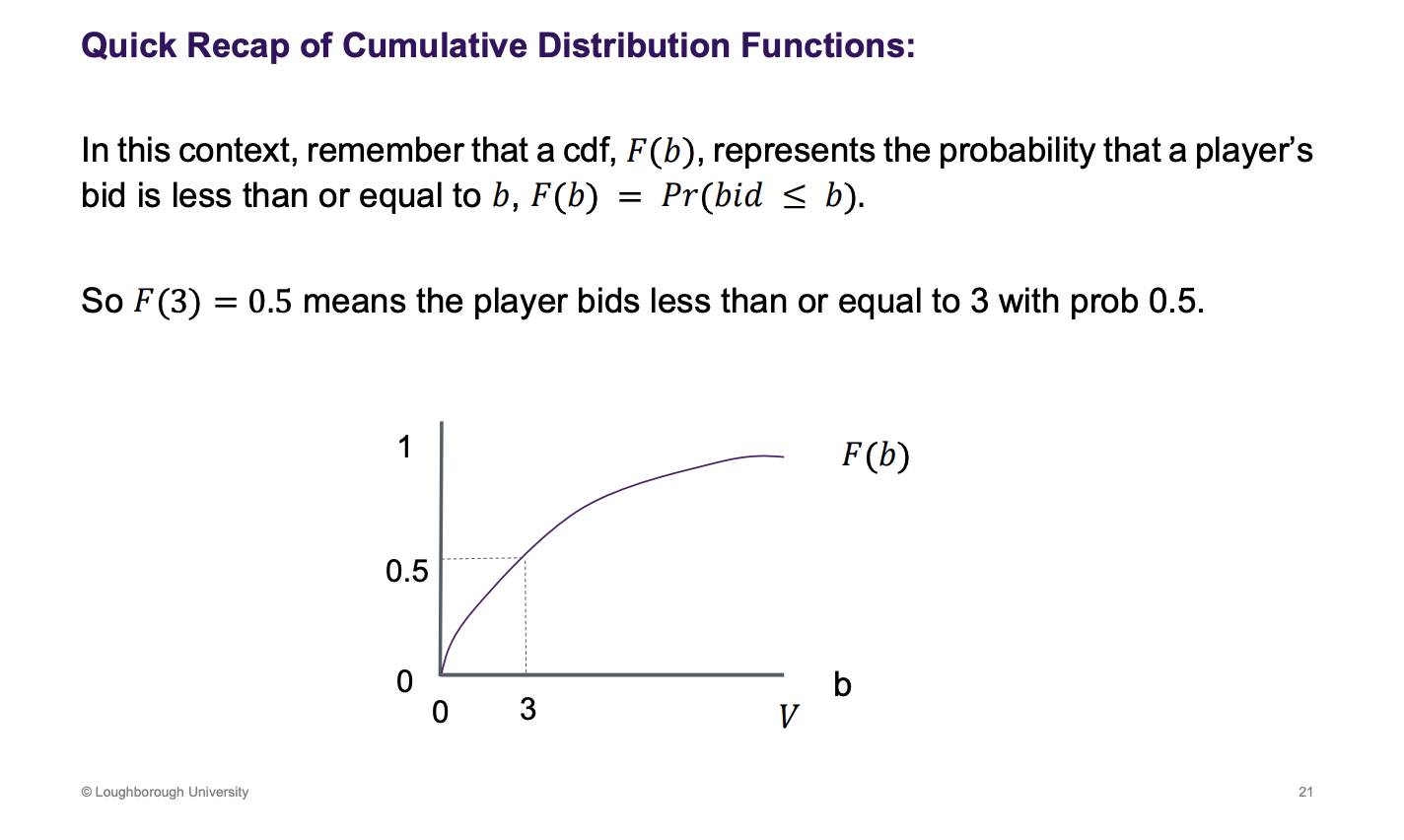
Too have a well behaved cumulative function, what assumptions must hold (3)
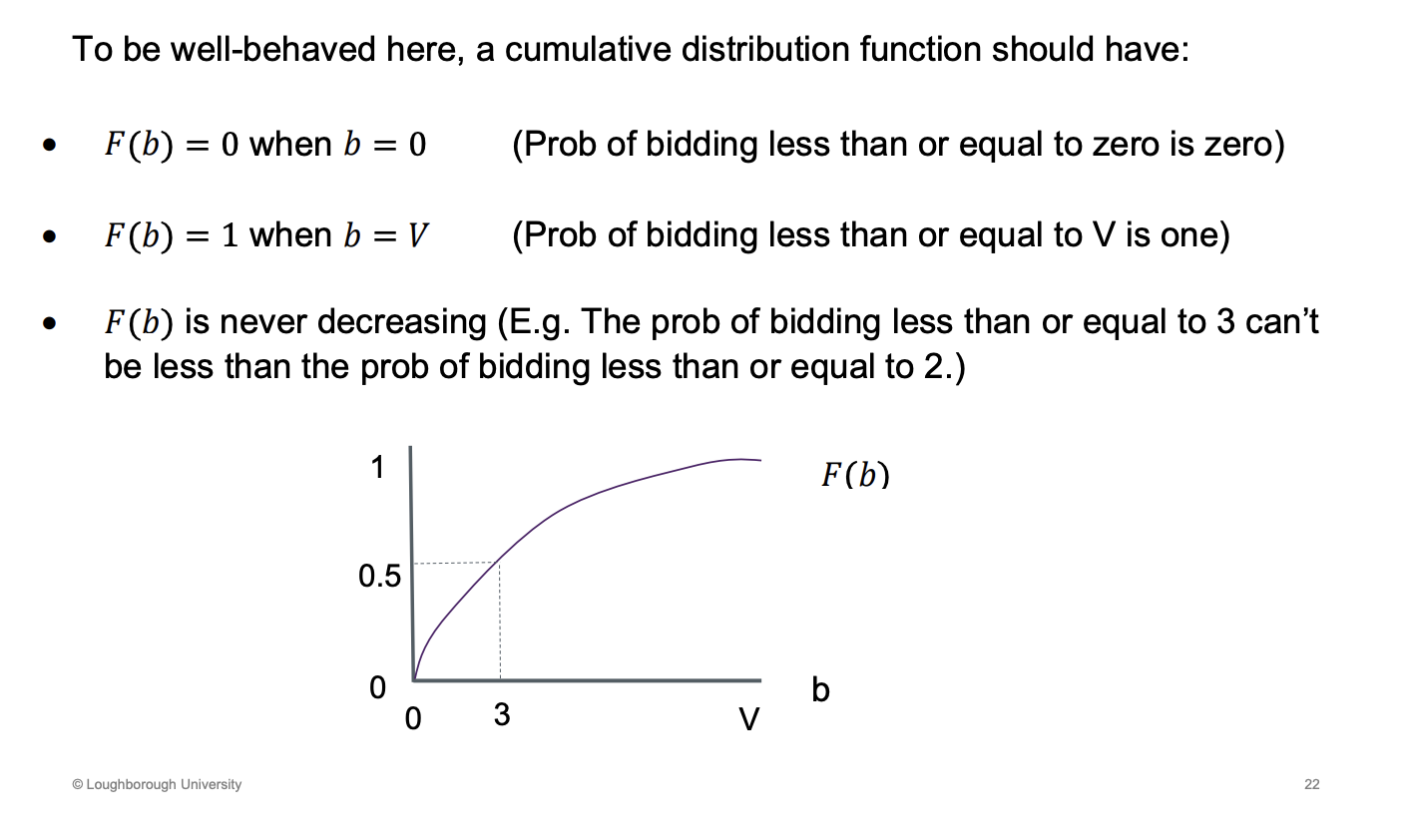
What function of b would make a player bid indifferently
Prize * probability that the other player bid the same or less than what I bid, minus the bid value
If you bid 0, the chance of winning is 0 and the bid is 0 so your payoff would be 0
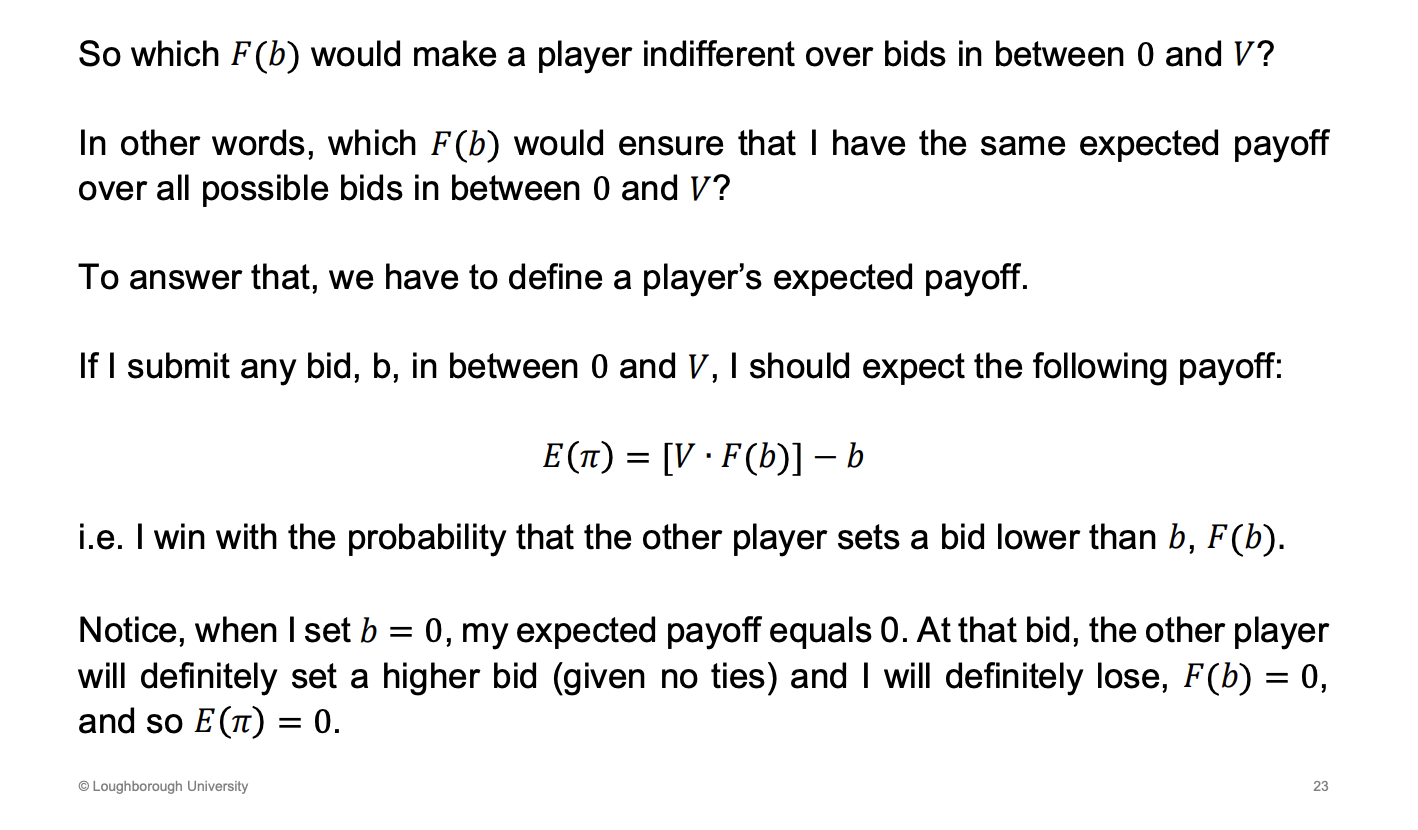
With the equation as we know all the outcome must have the same probability and payoff, if we know b=0 what does this mean and where can the mixed strategy nash equilibria be shown as
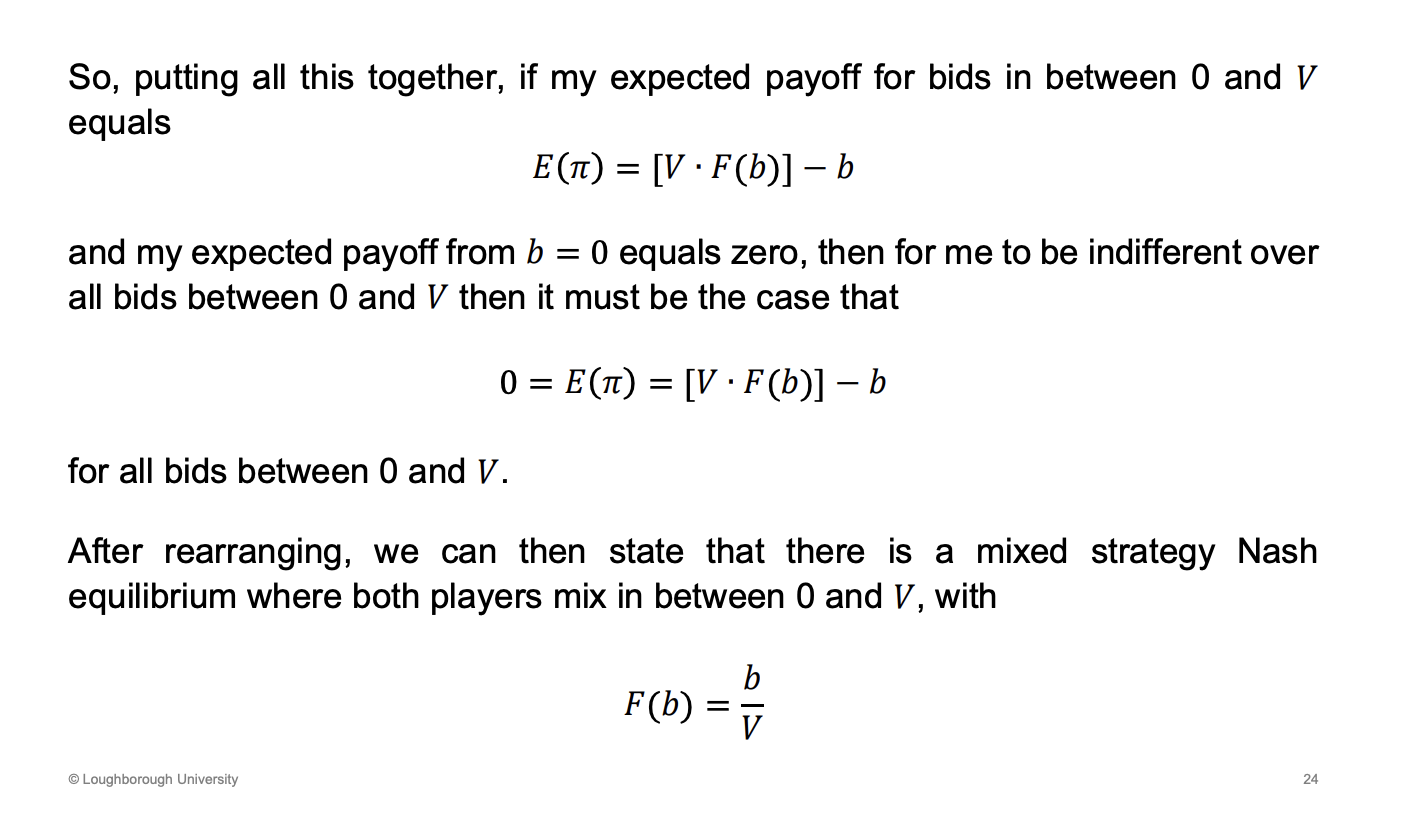
What is the equation which shows that there is a mixed strategy nash equilibrium, go through the 3 assumptions (3)
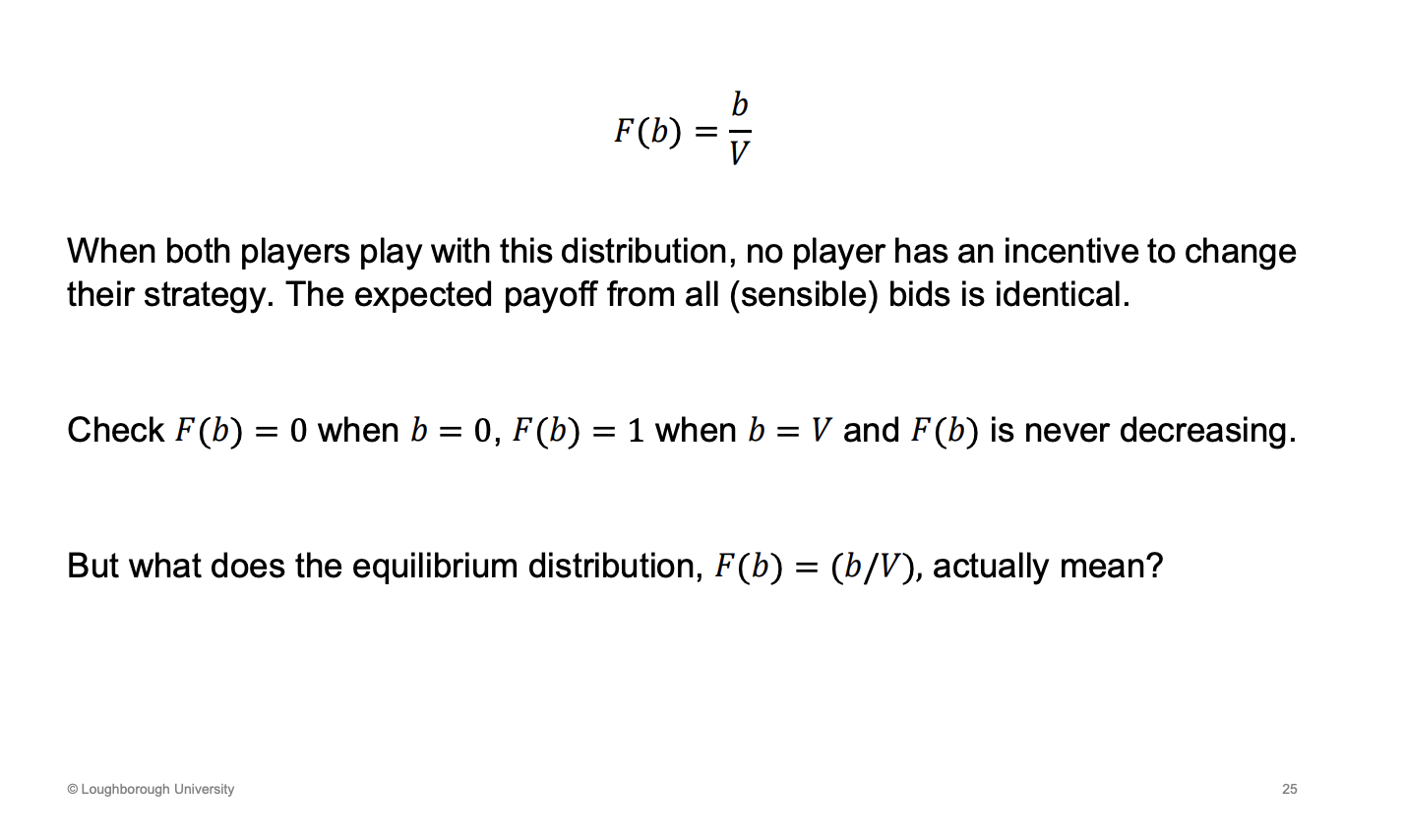
What does the equilibrium distribution mean F(b) = (b/V)
In eqm, equally likely to pick any bid between 0 - 10, keeps the other player in different as well
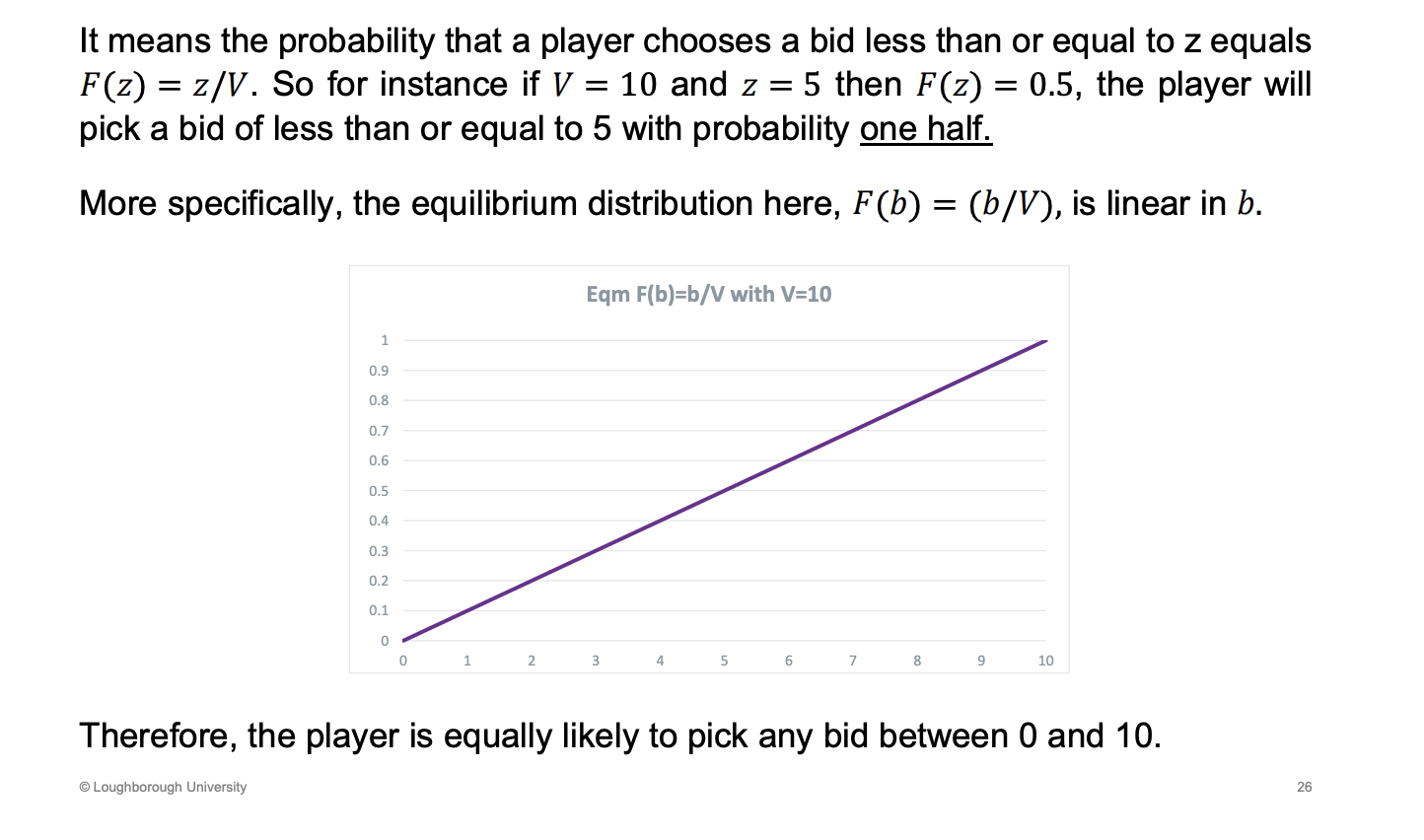
What does the all pay auction show
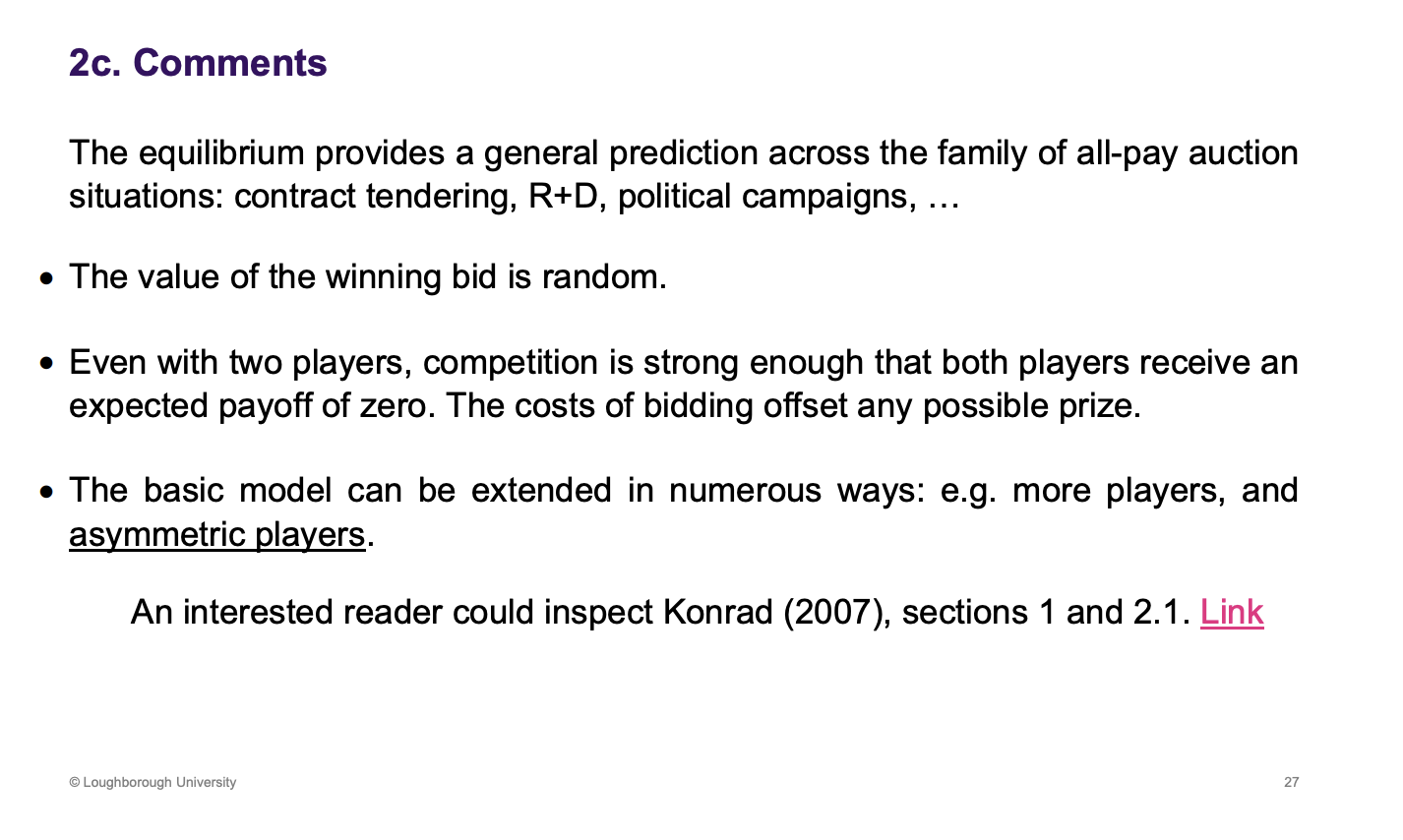
How can the outcome something differ to what is expected in a all pay auction
Low bids - maybe risk adverse, High bids - they just want to win, not worried about the payoffs
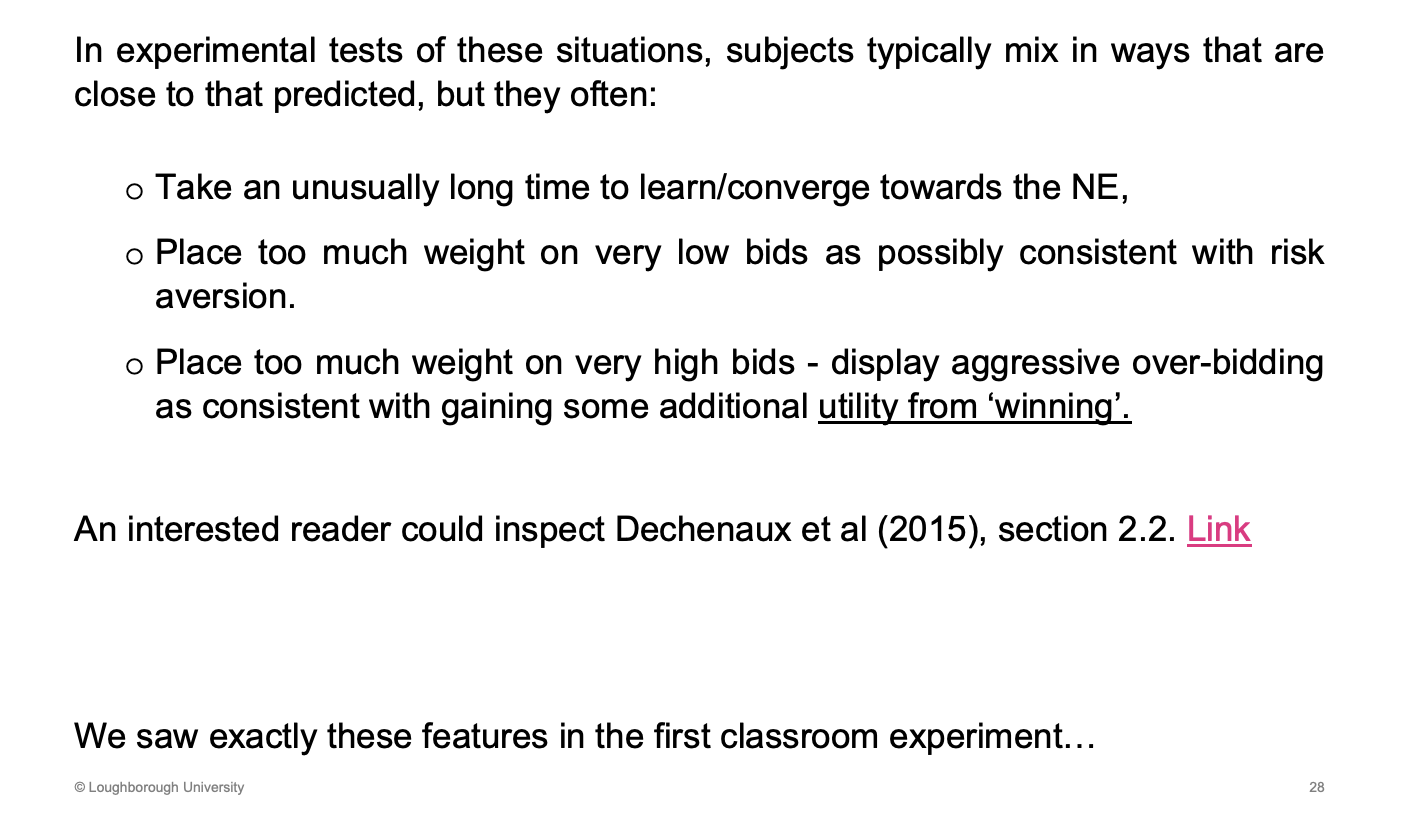
How is the equilibrium impact with more players
Much steeper, more probability with lower bids
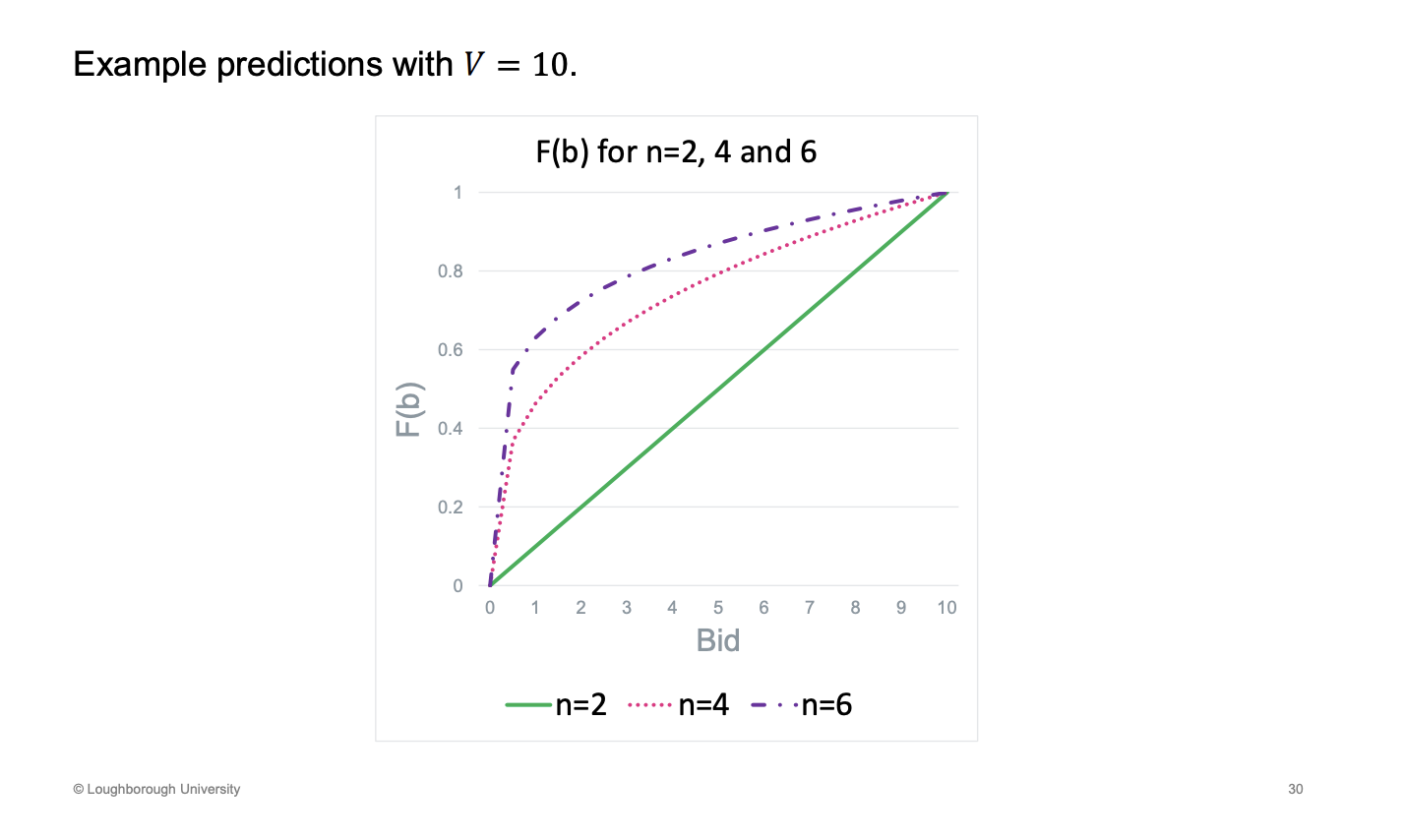
How is the equilibrium impact with more players (continued)
globalisation
Normally we believe people to compete harder - more bids upwards not downwards - like bidding for a house. In here, the price is going down as you have to pay for the bid, dont want to risk losing the bid.
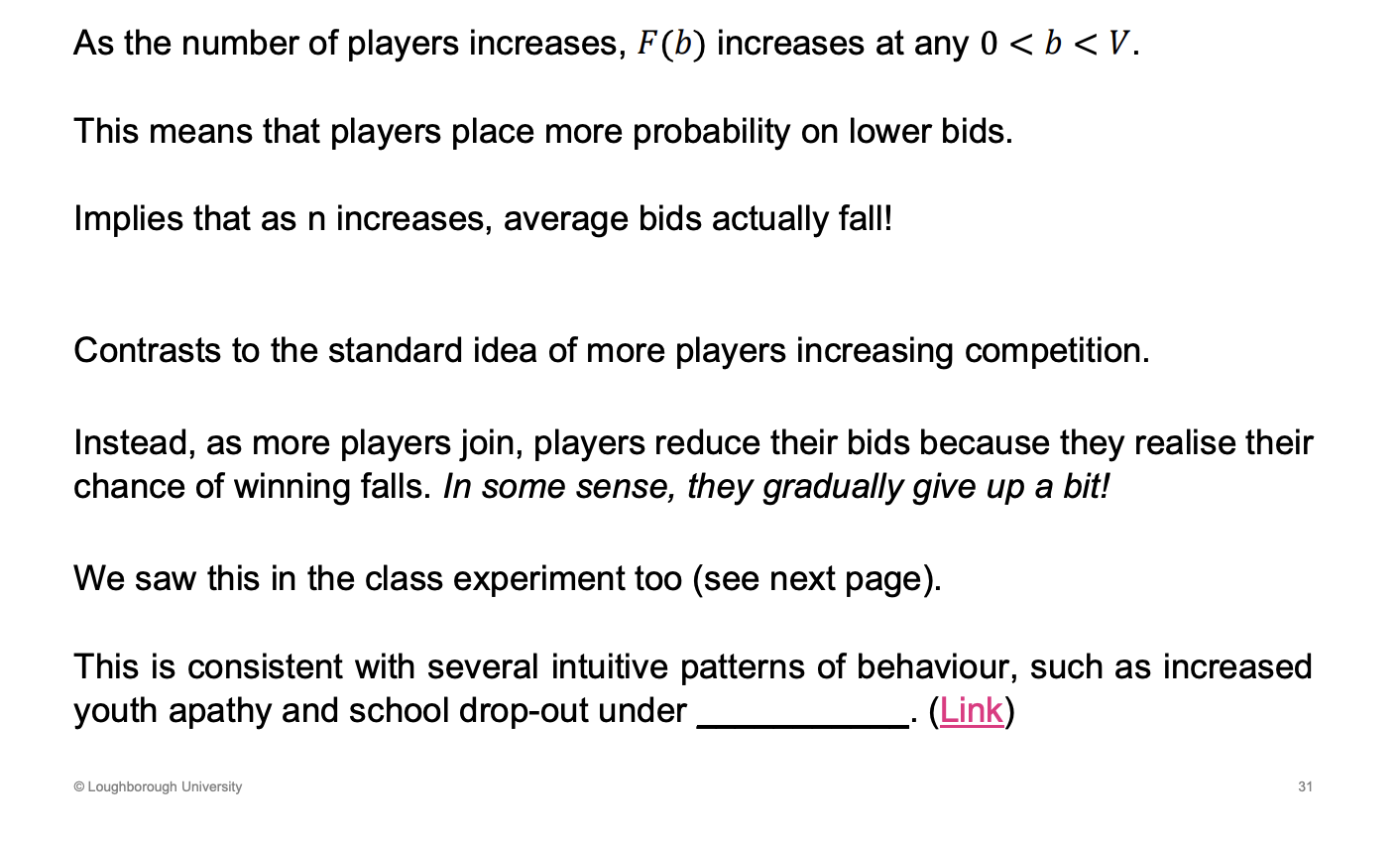
What is a prime example of all pay auctions
